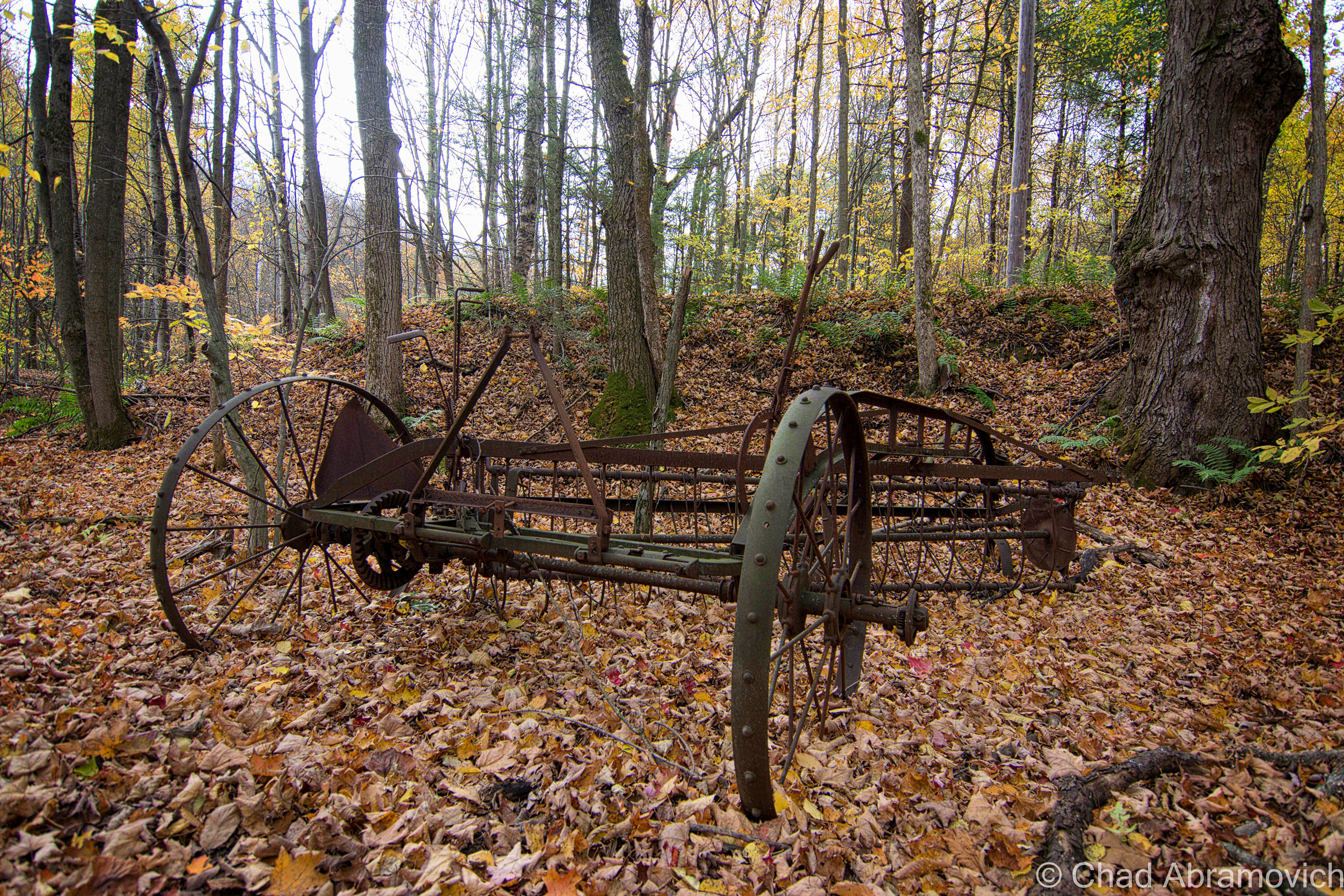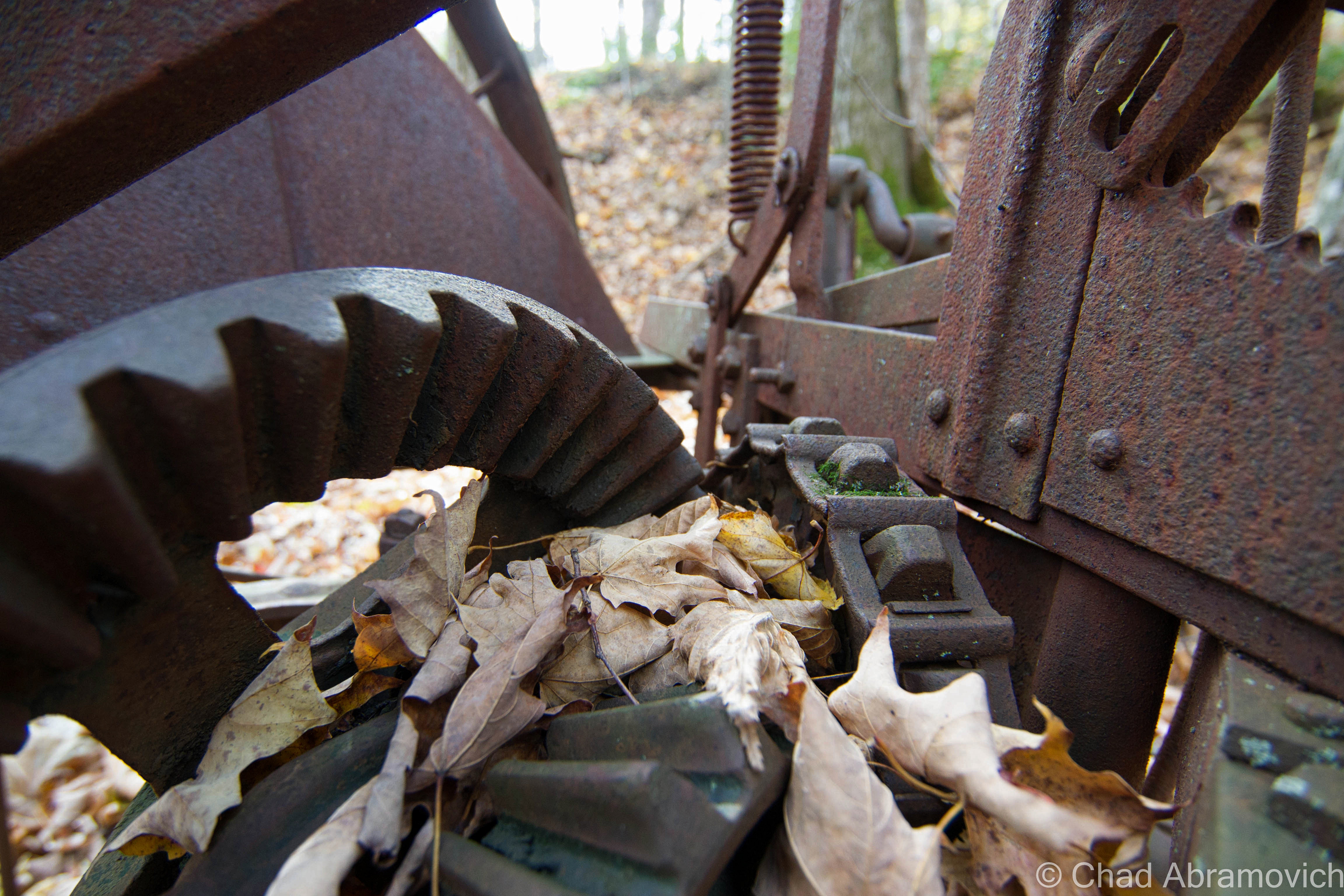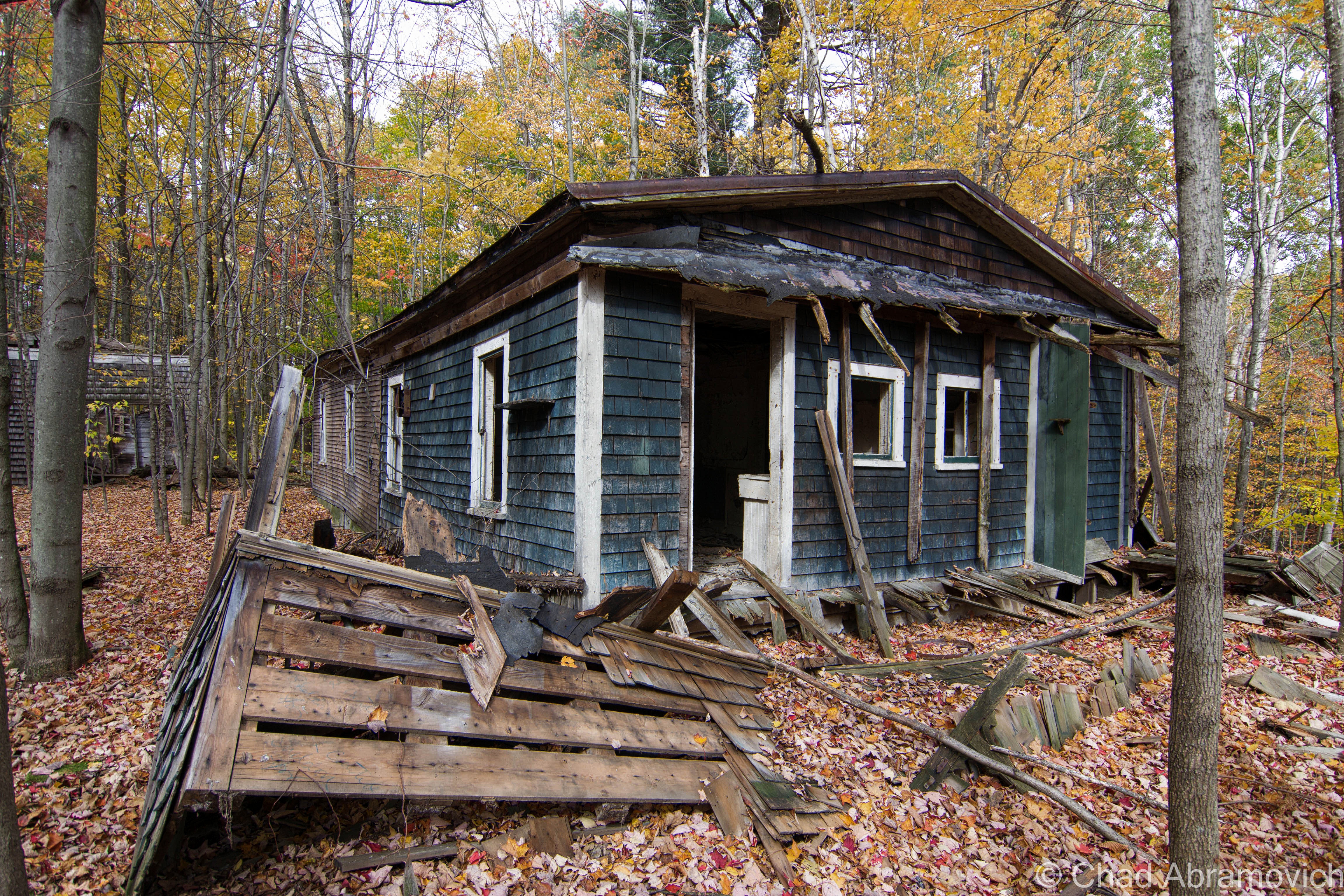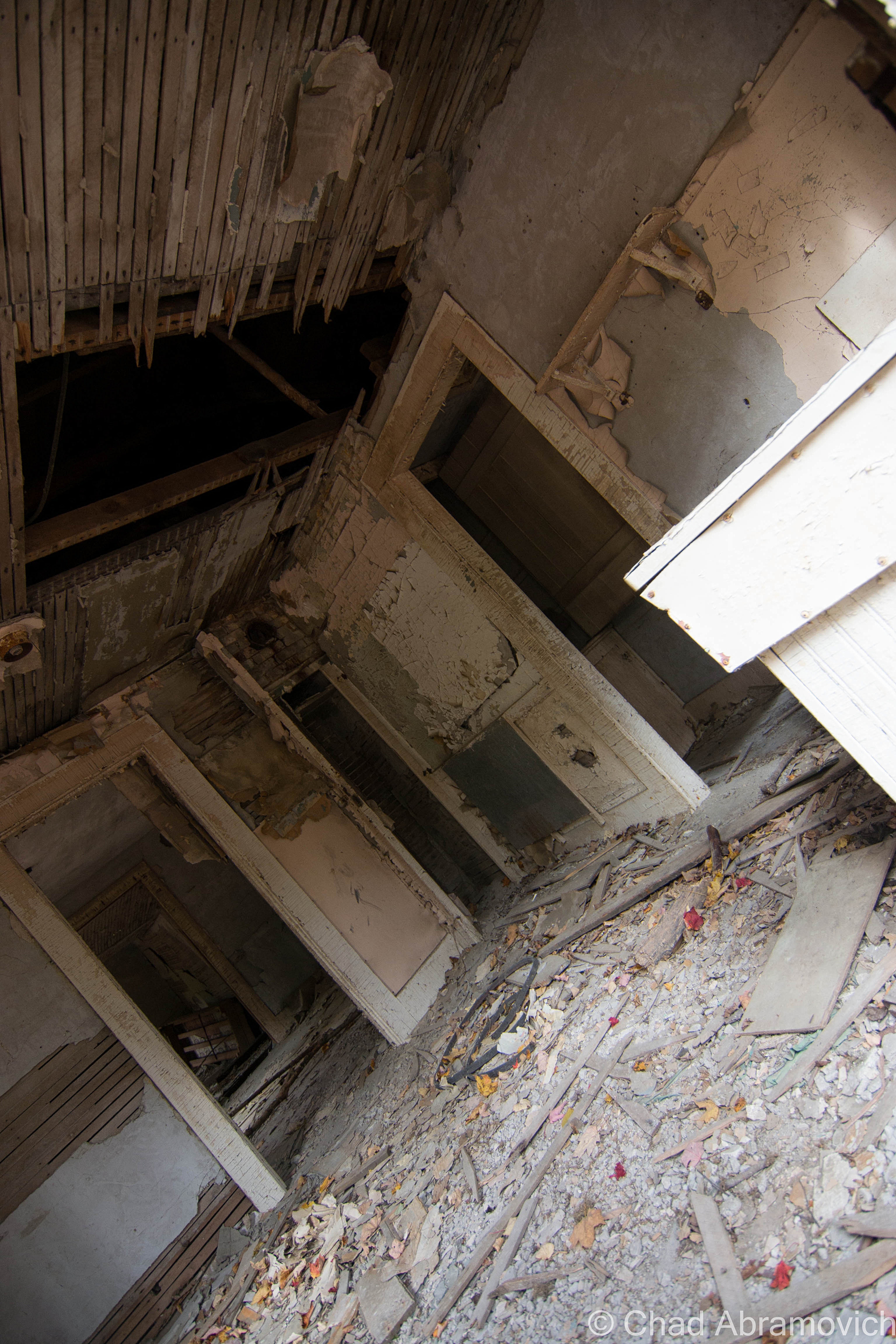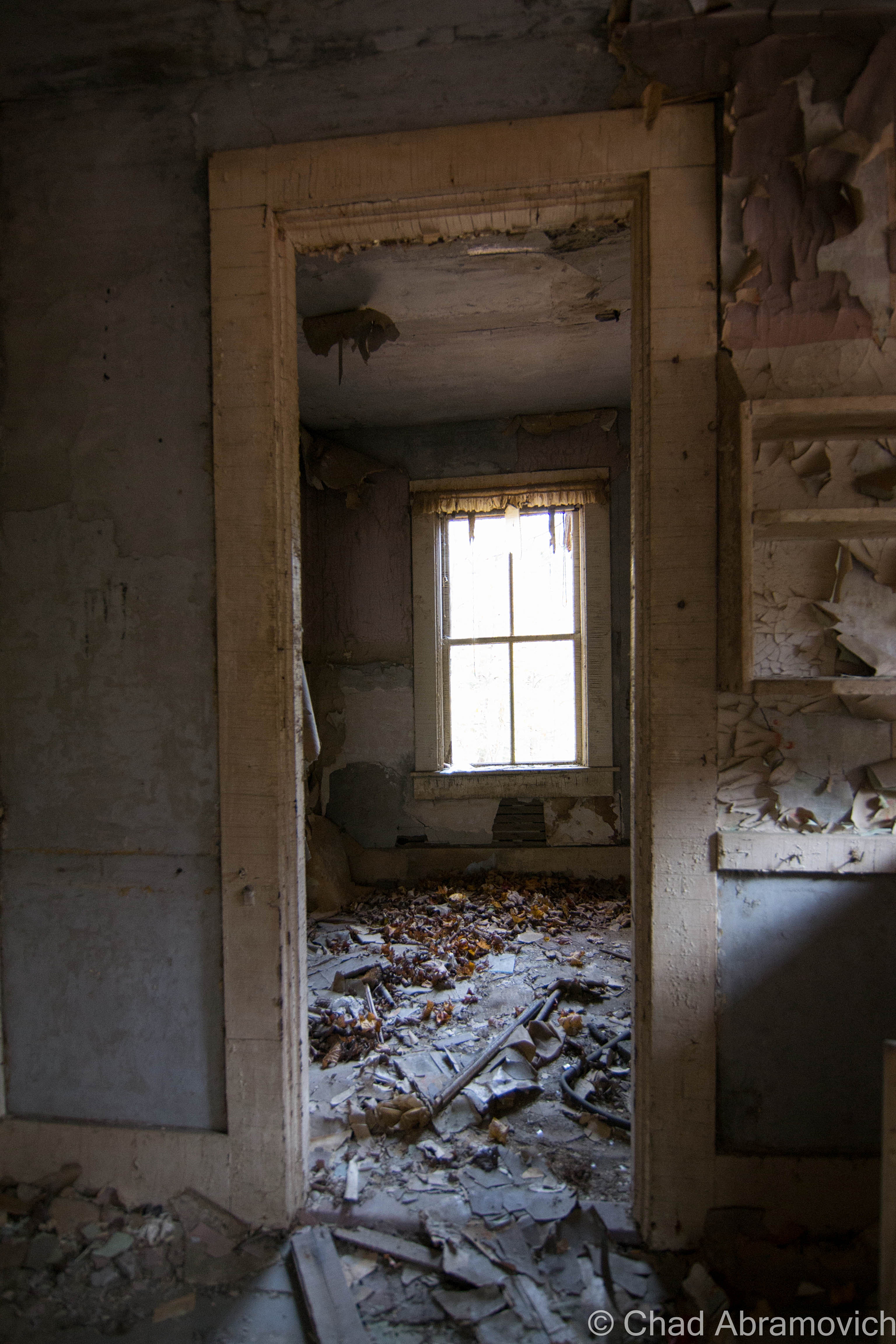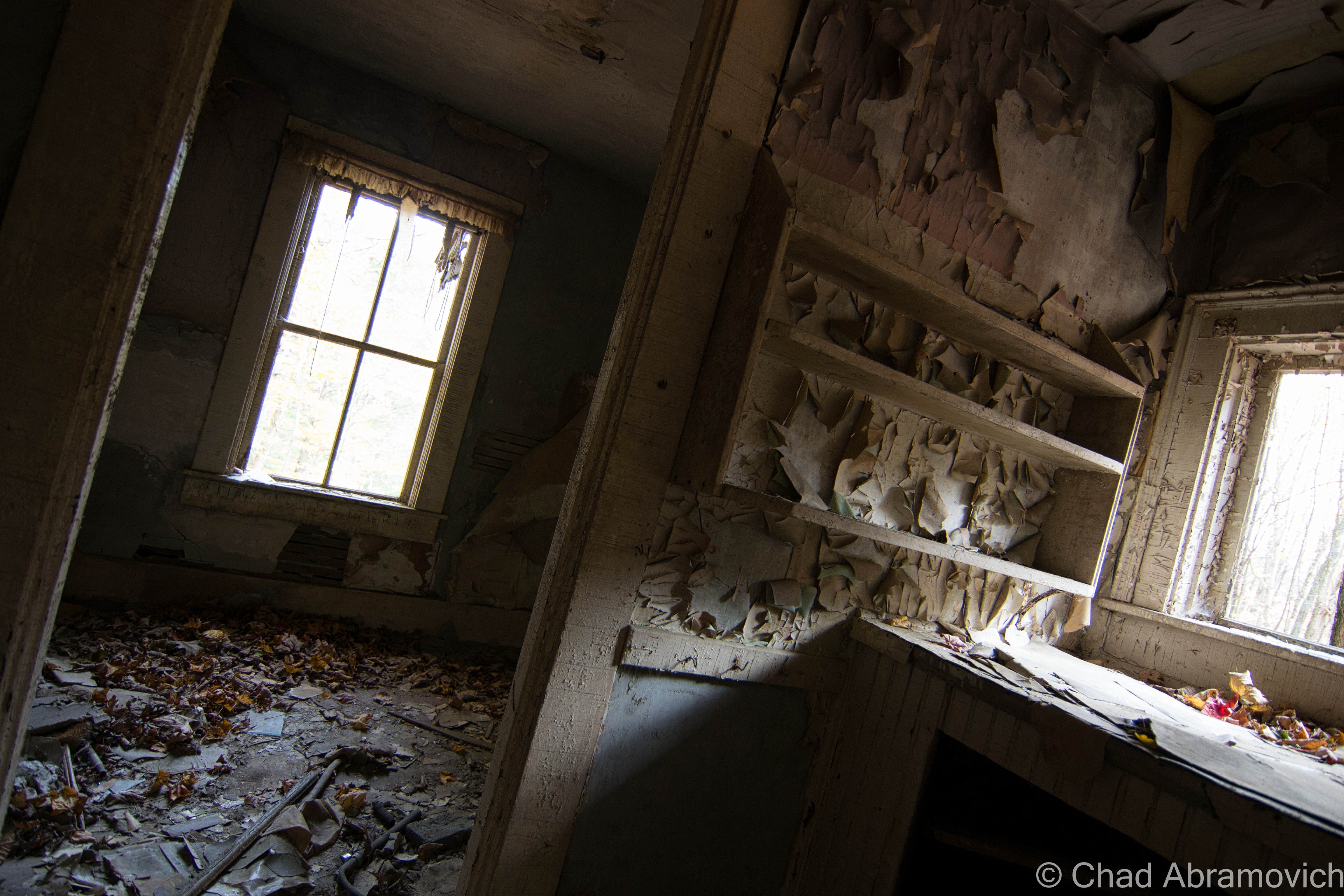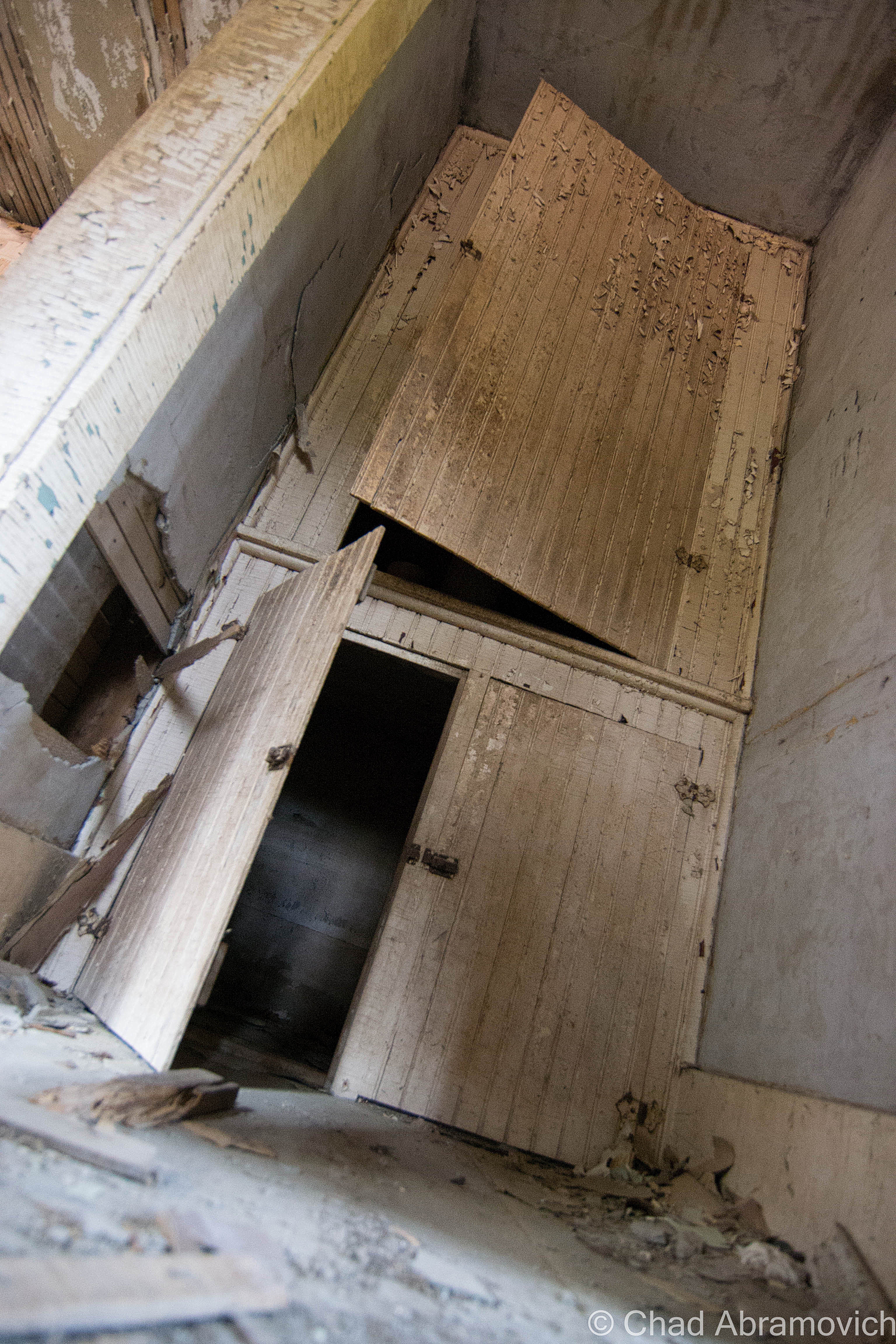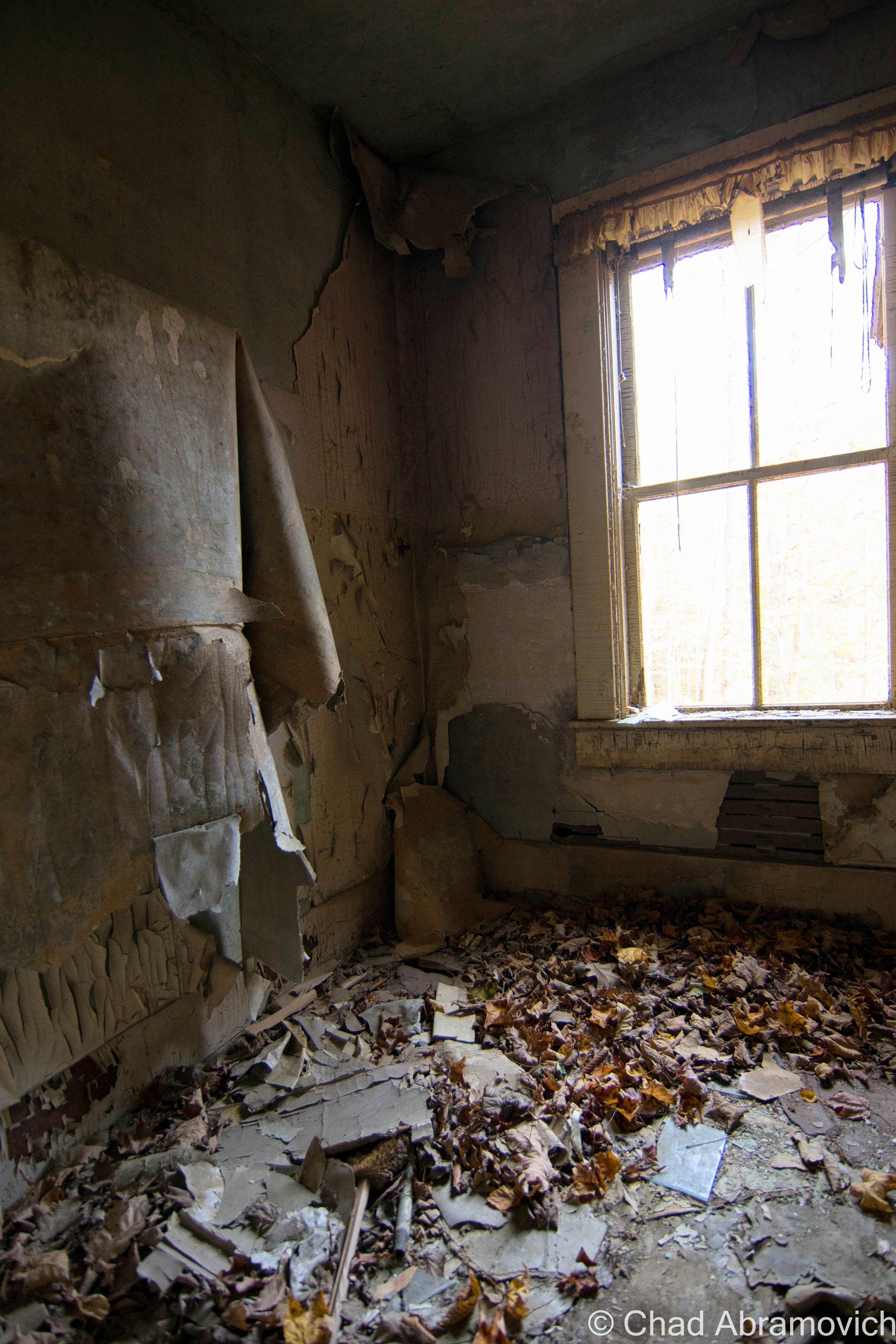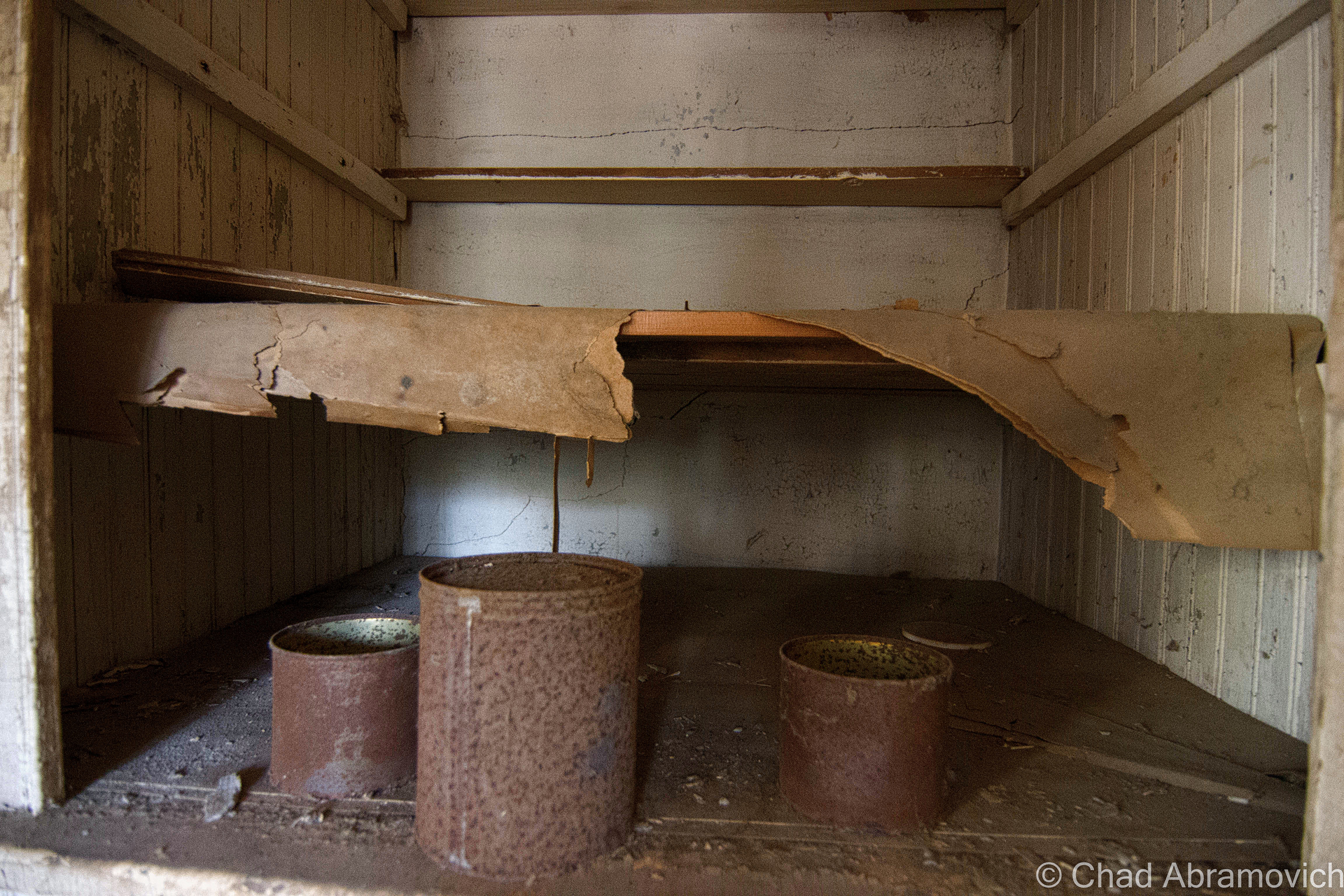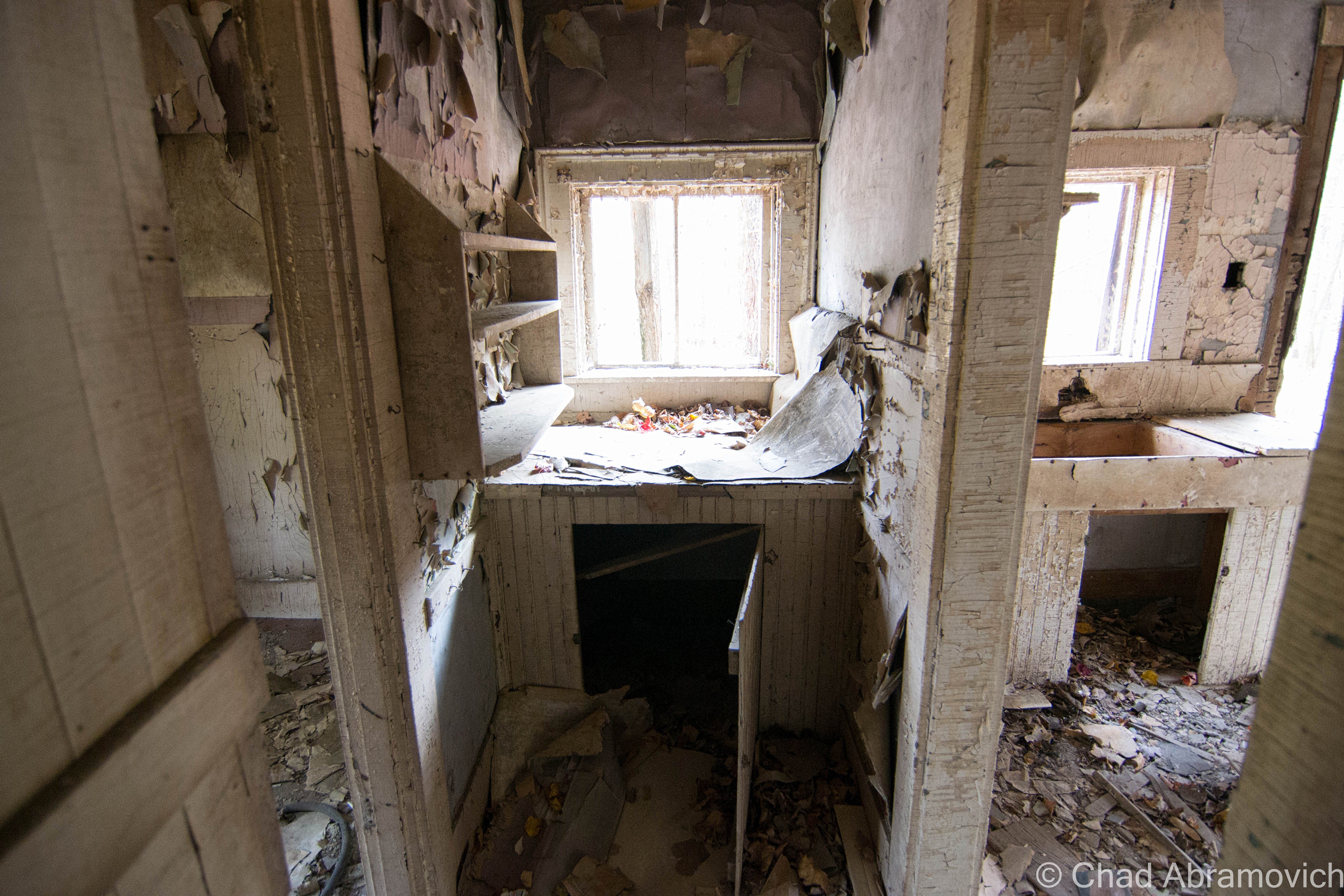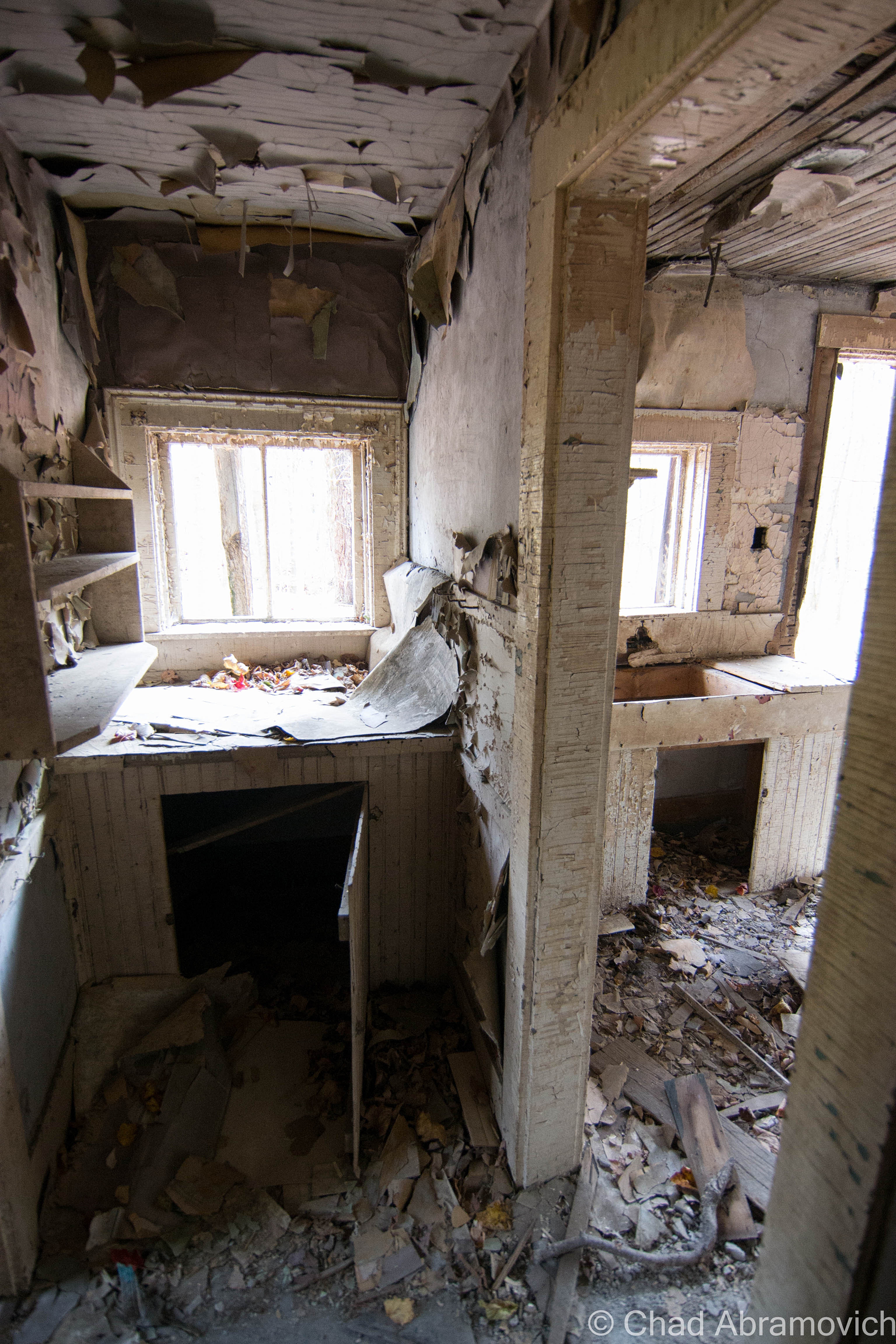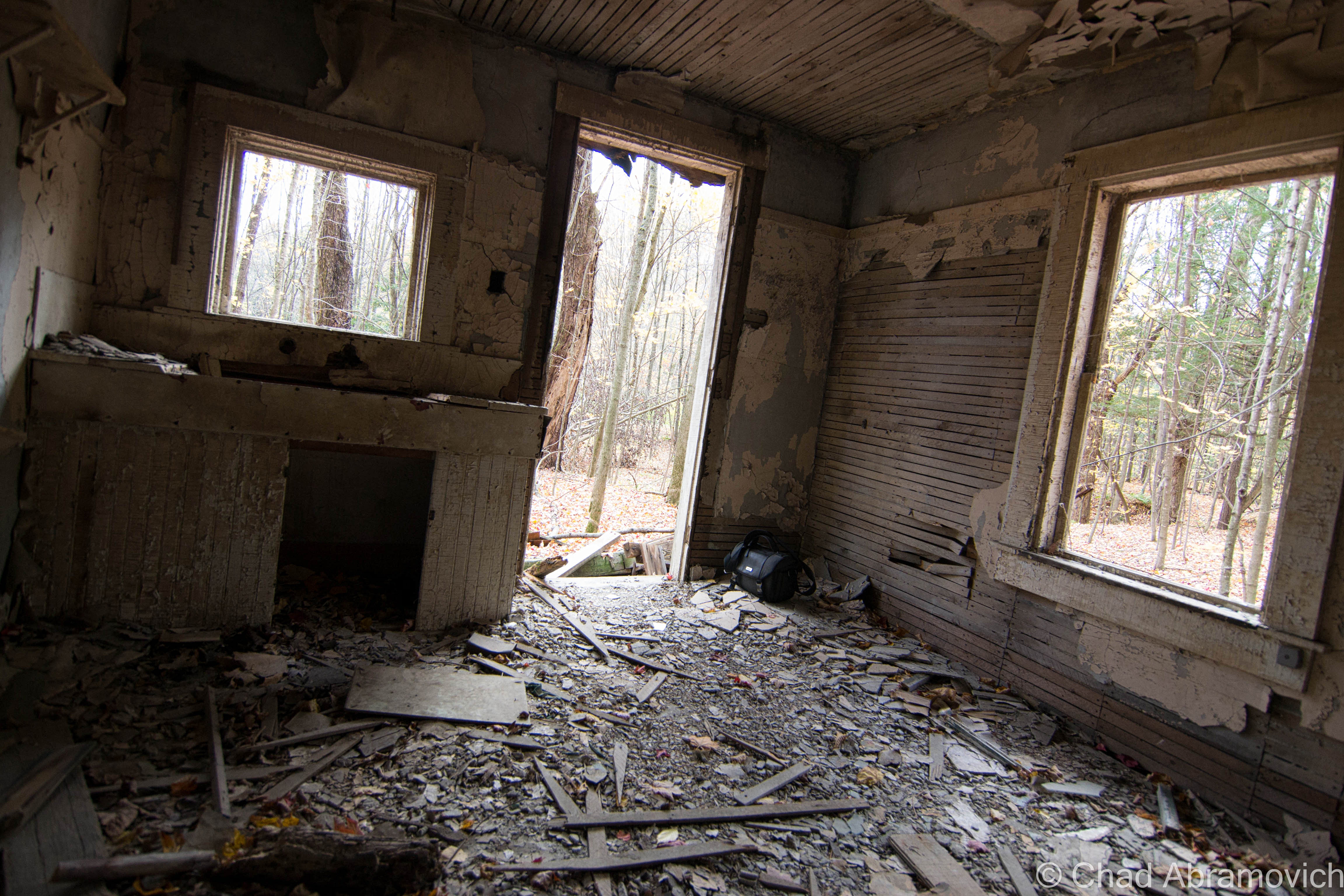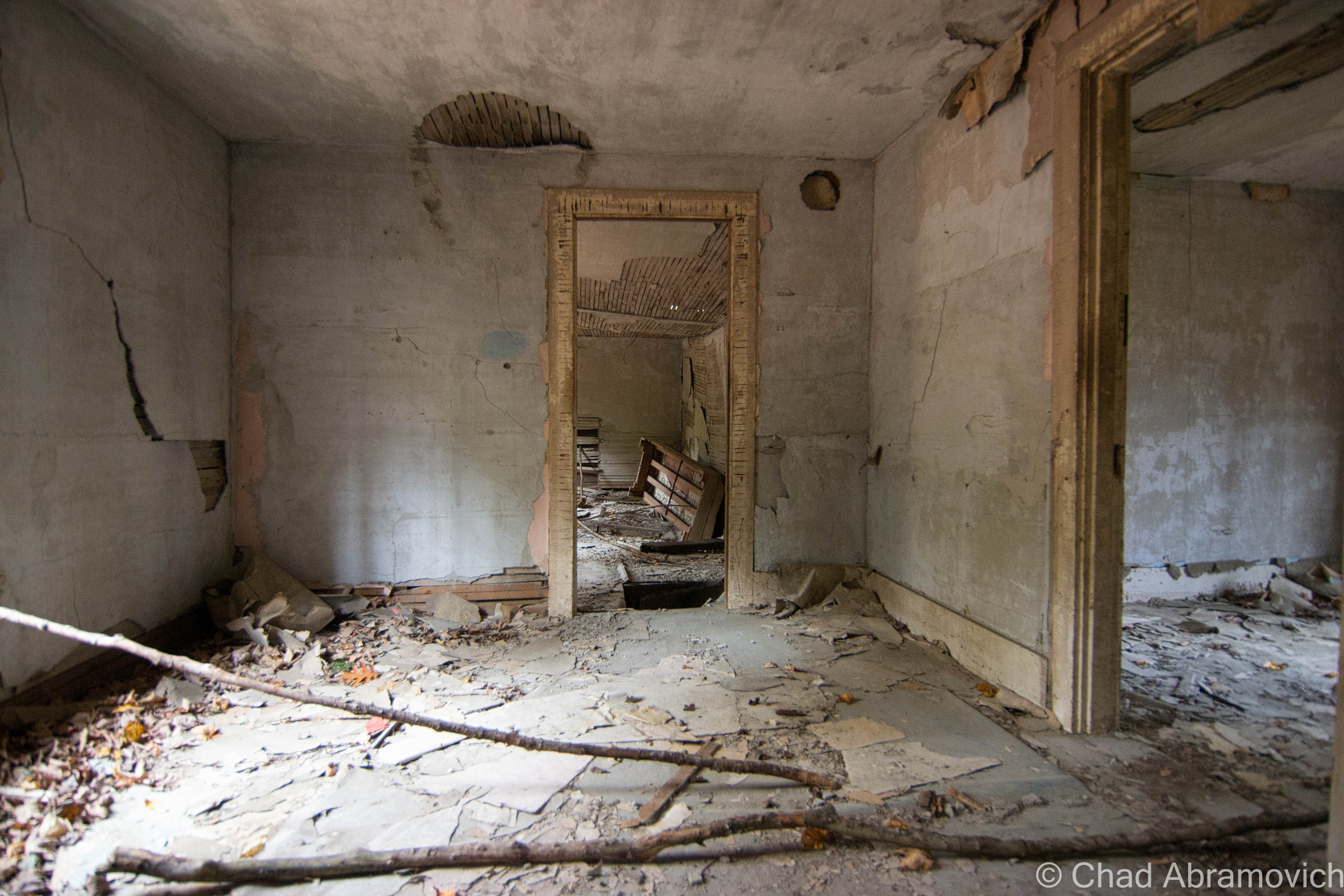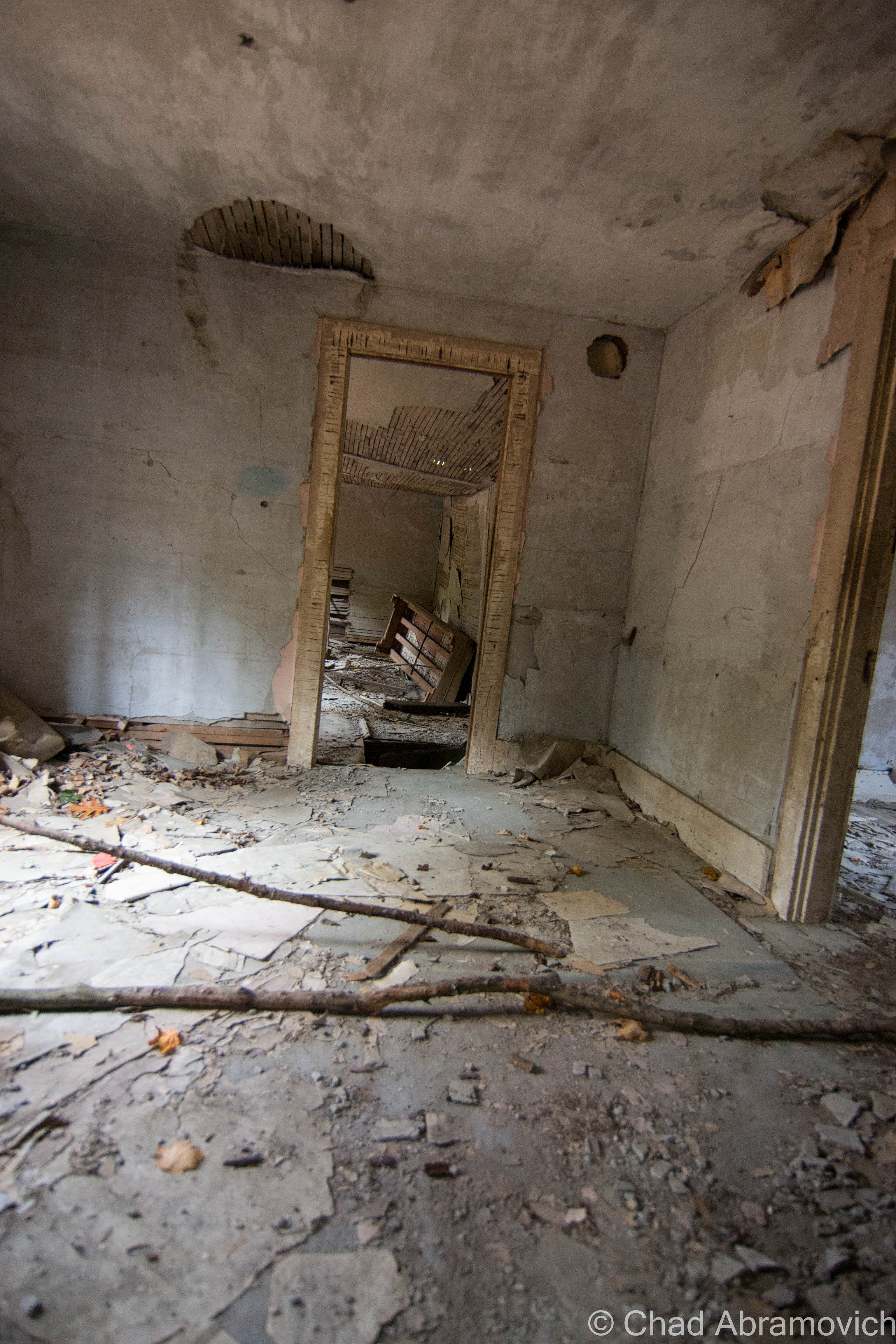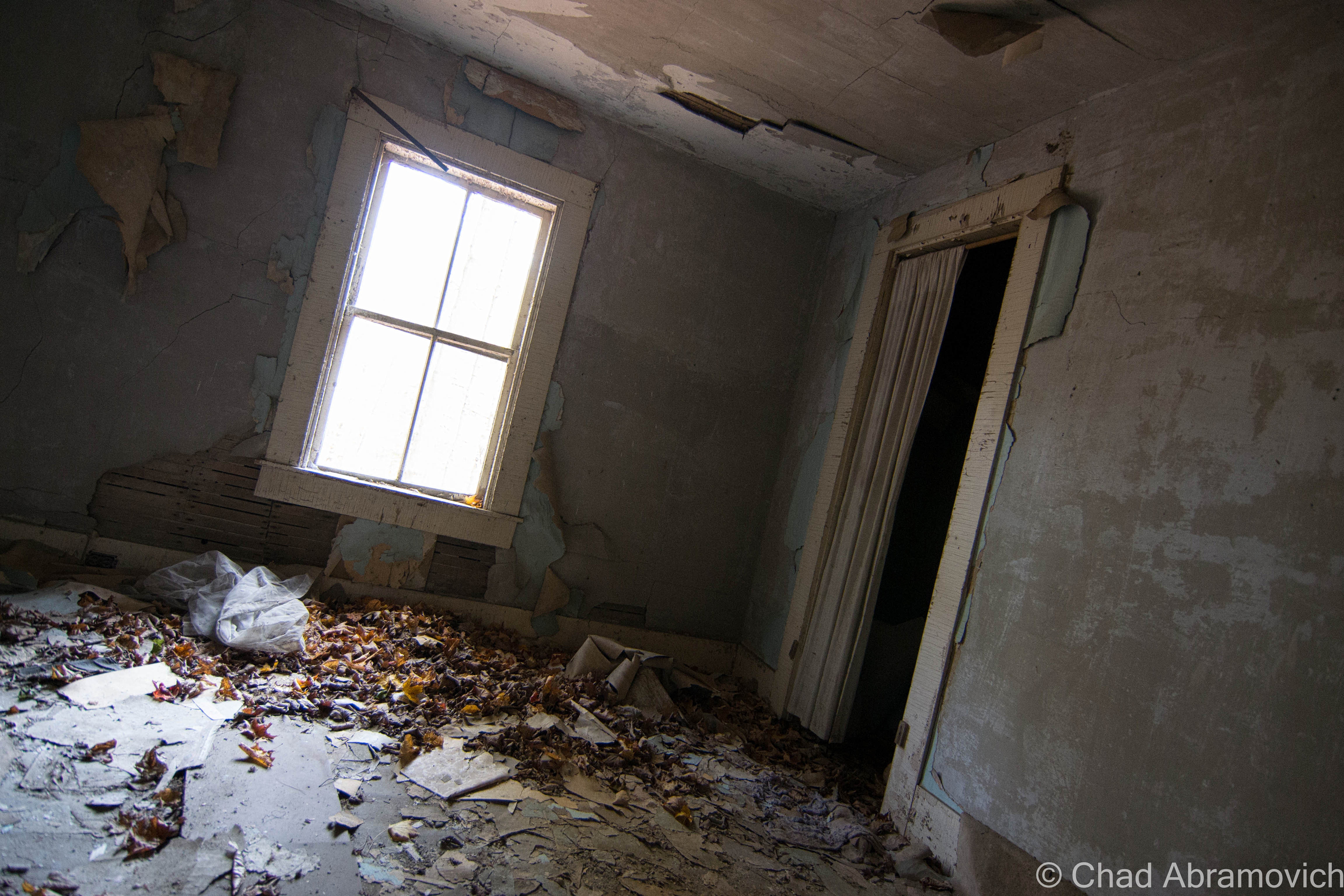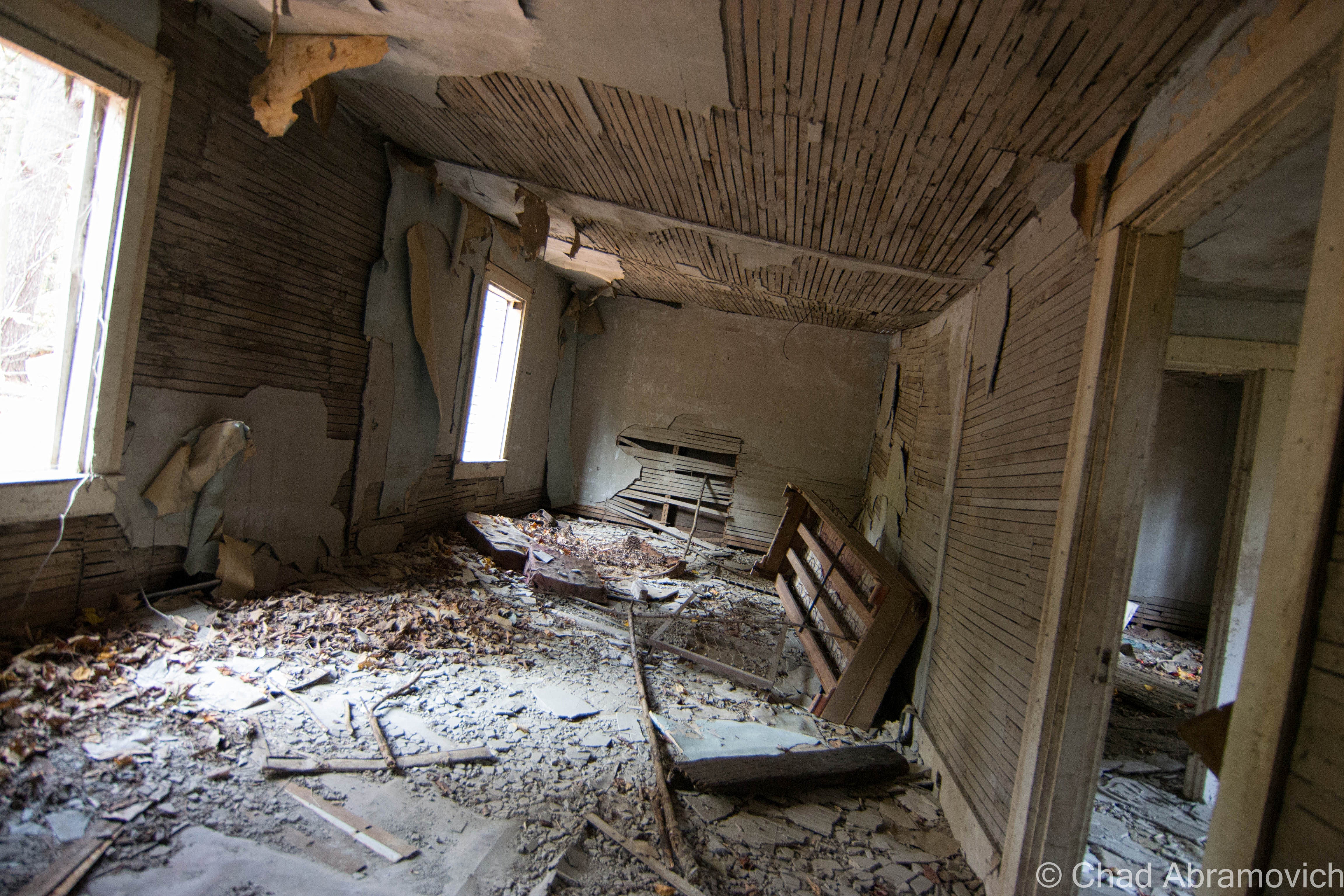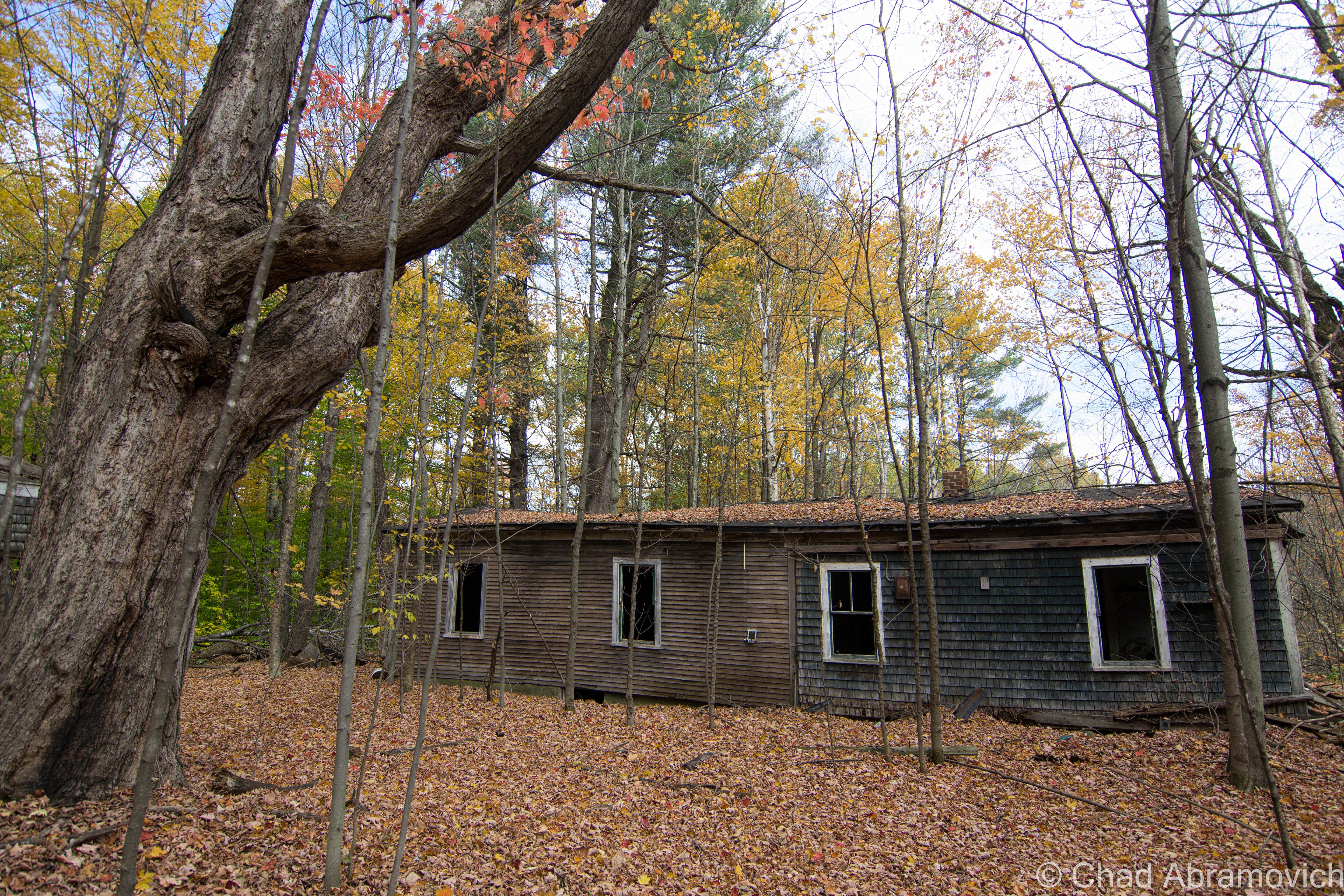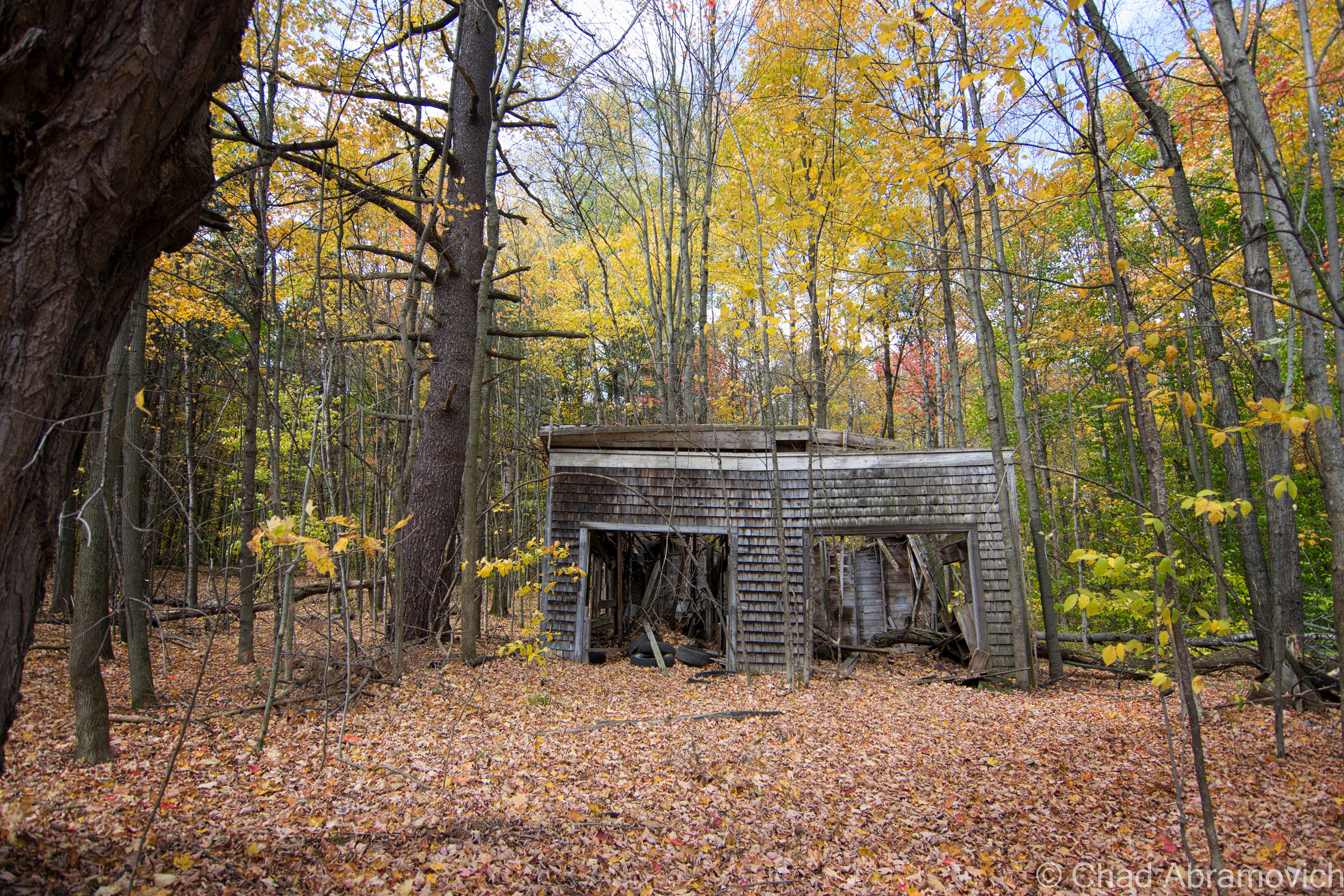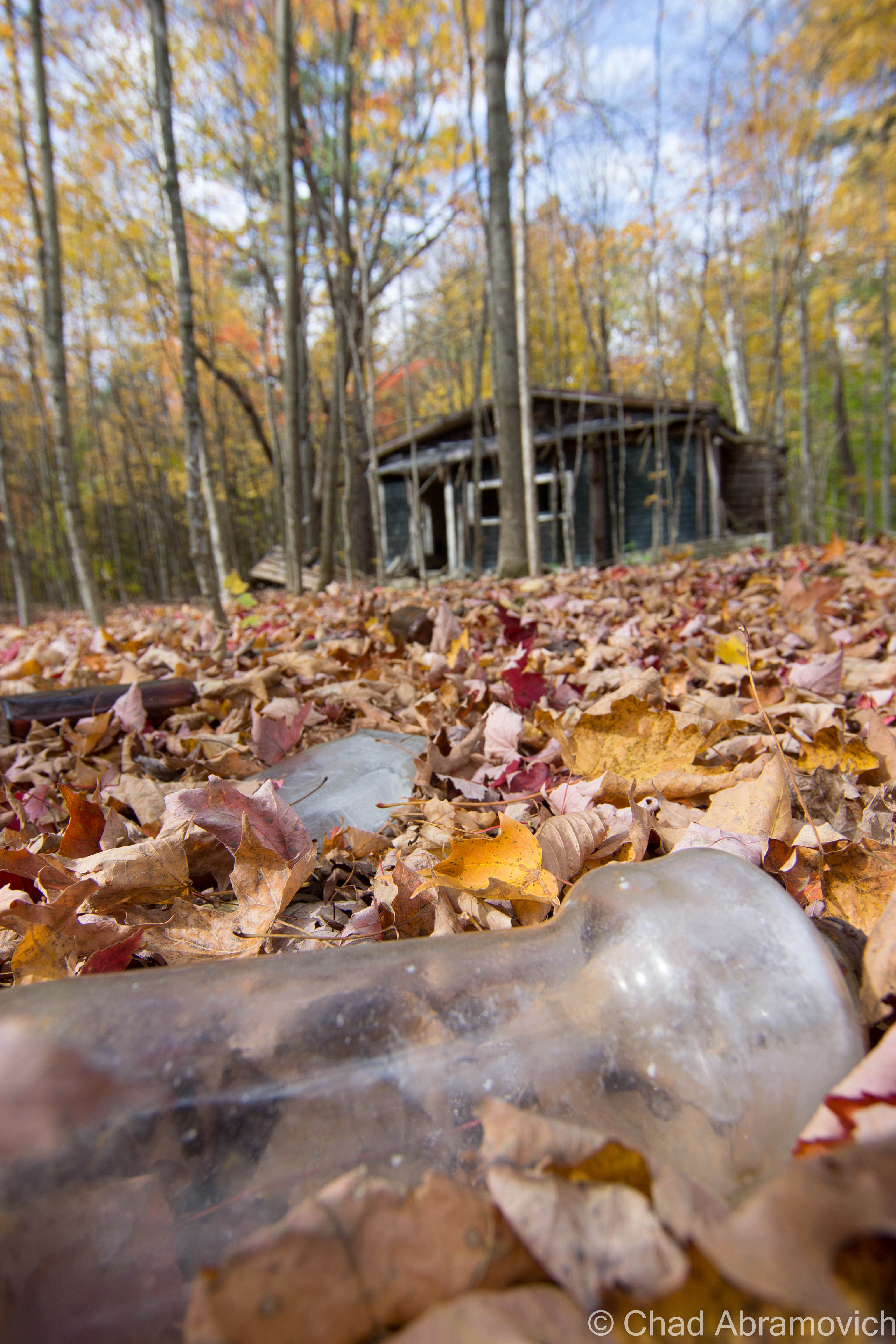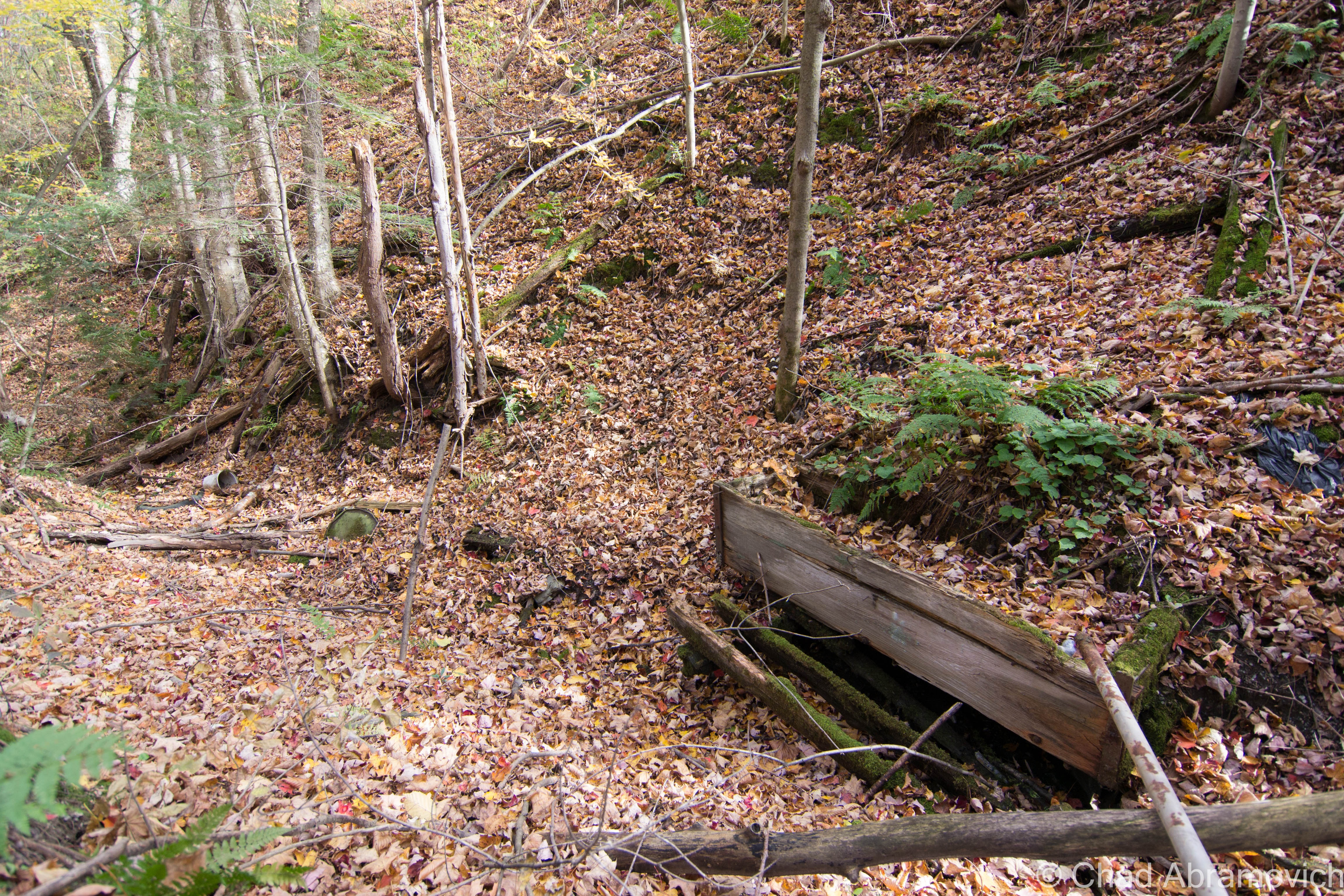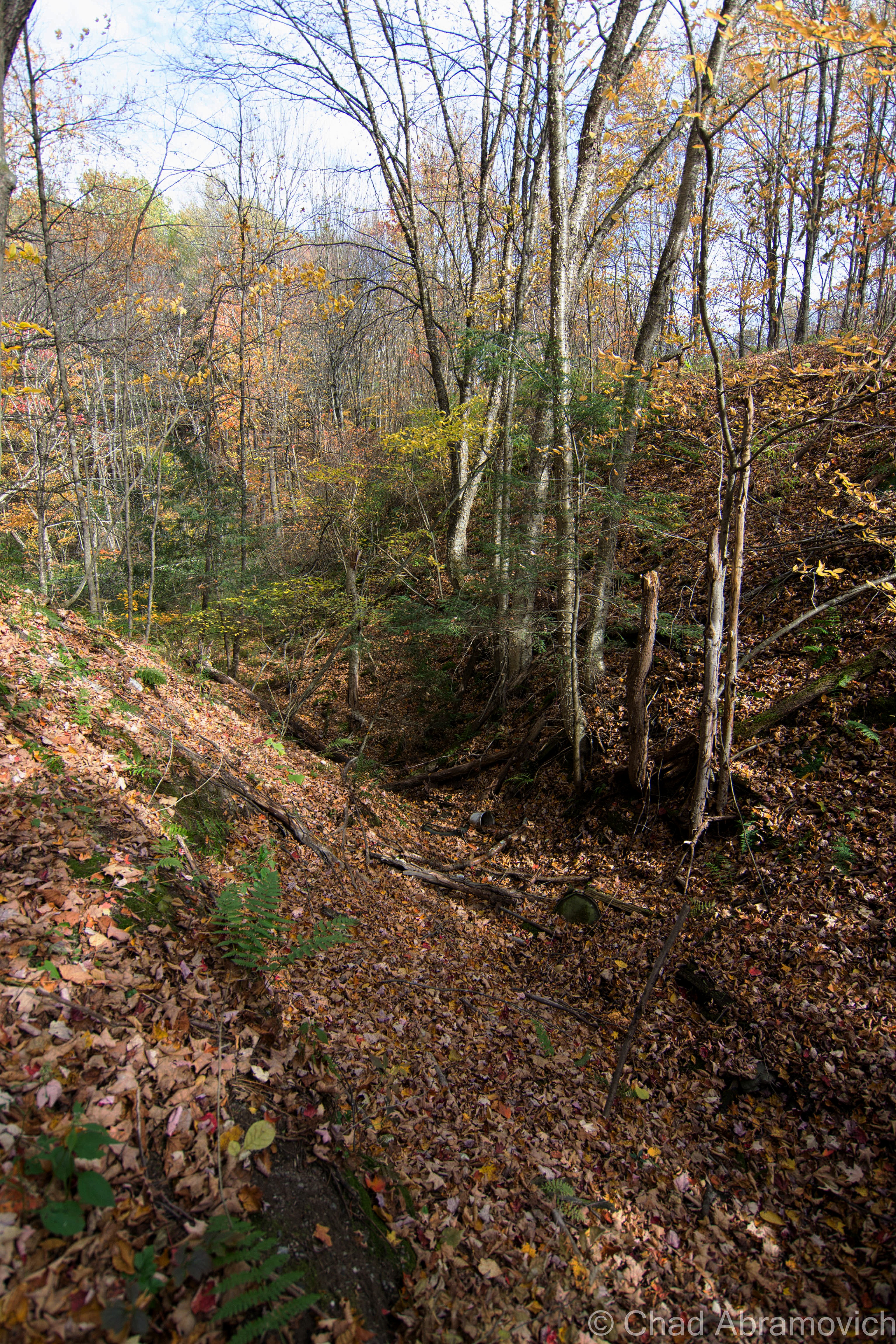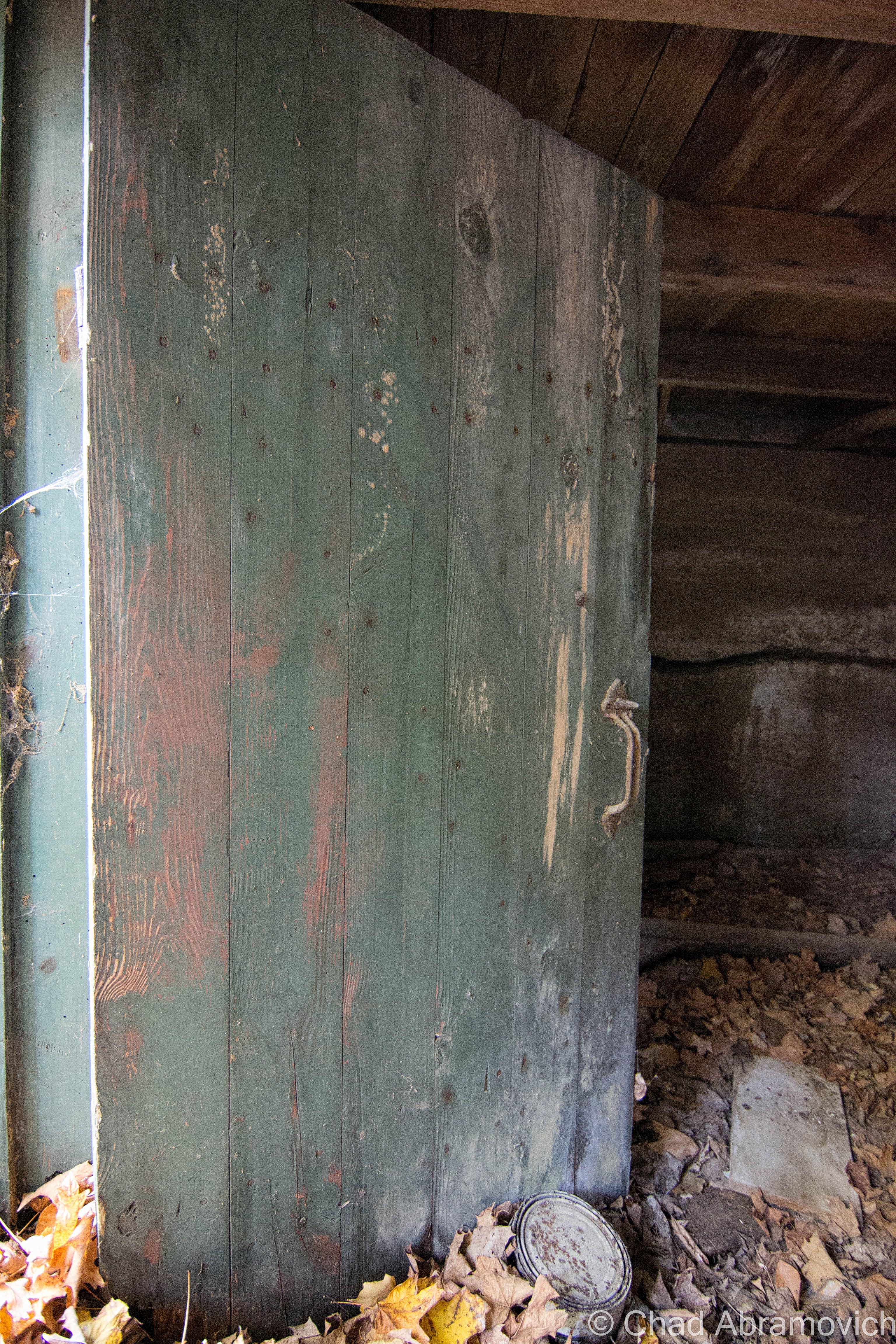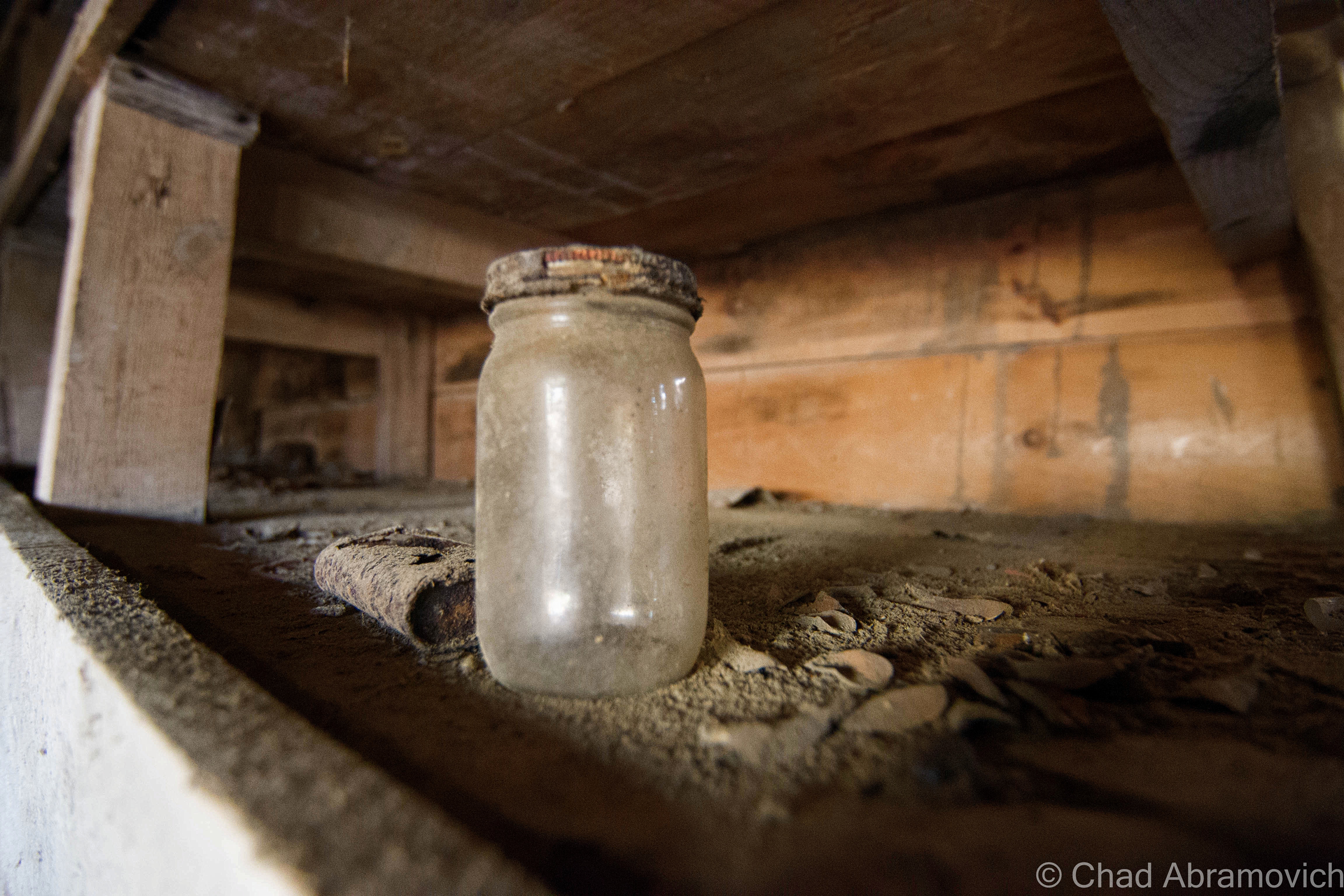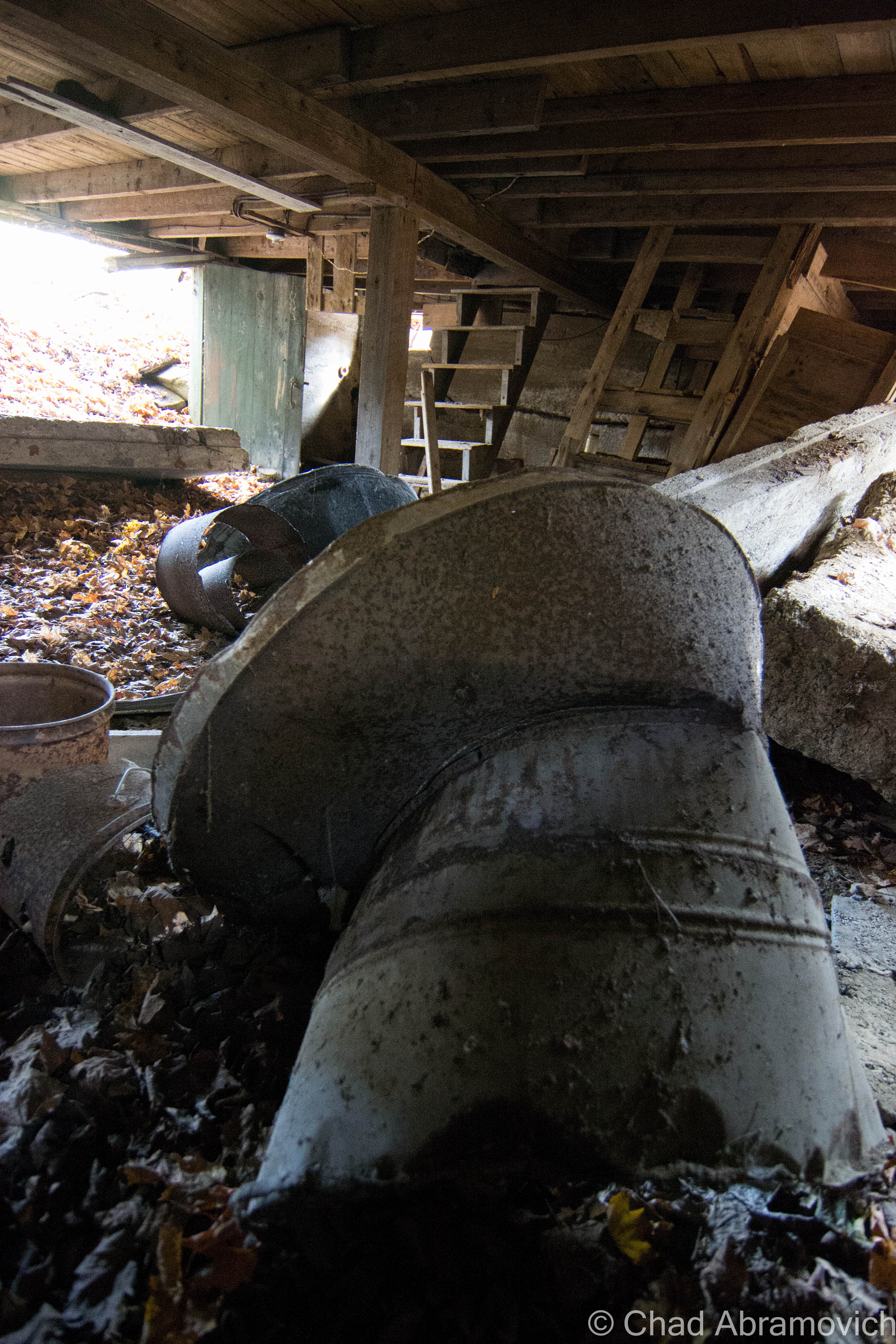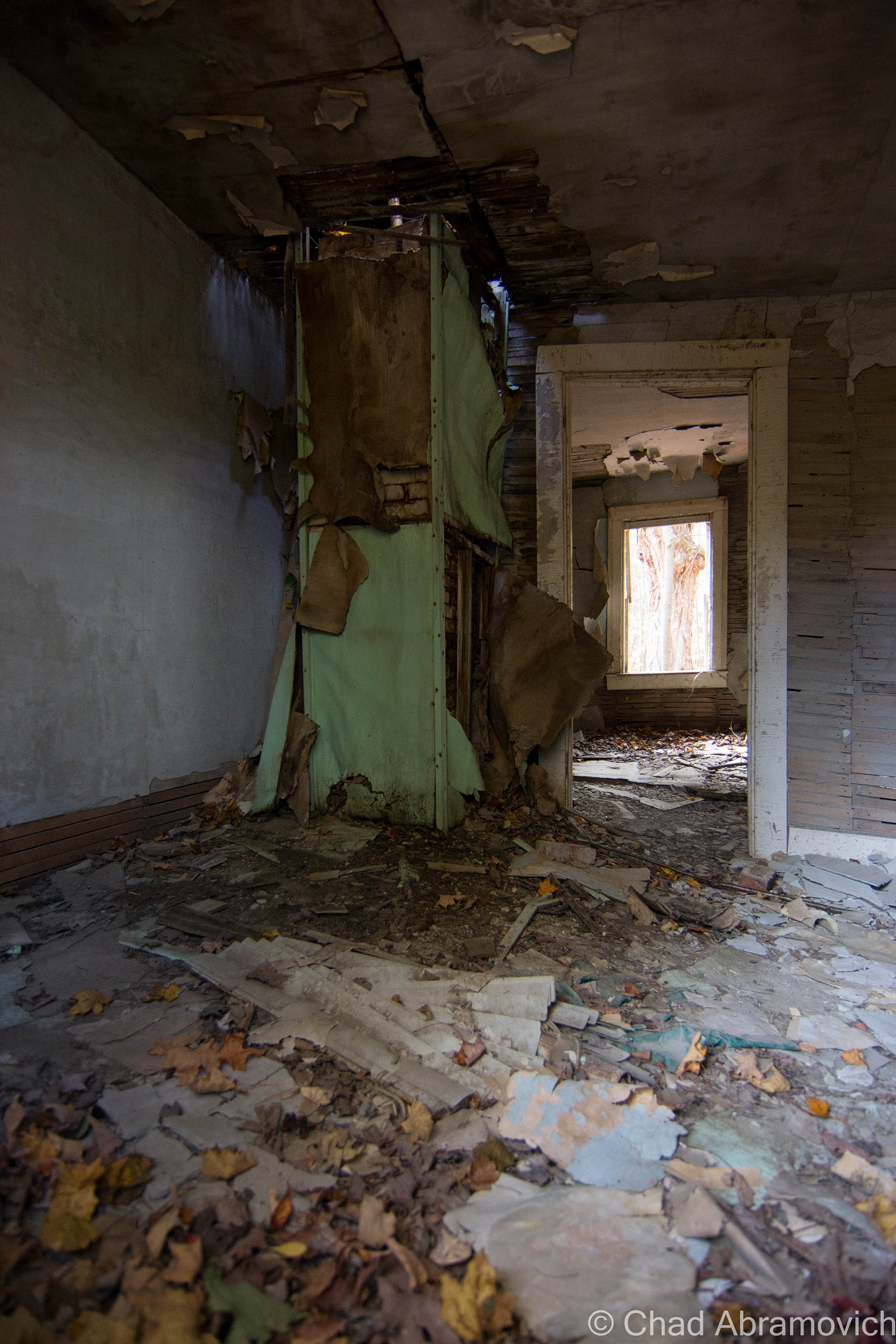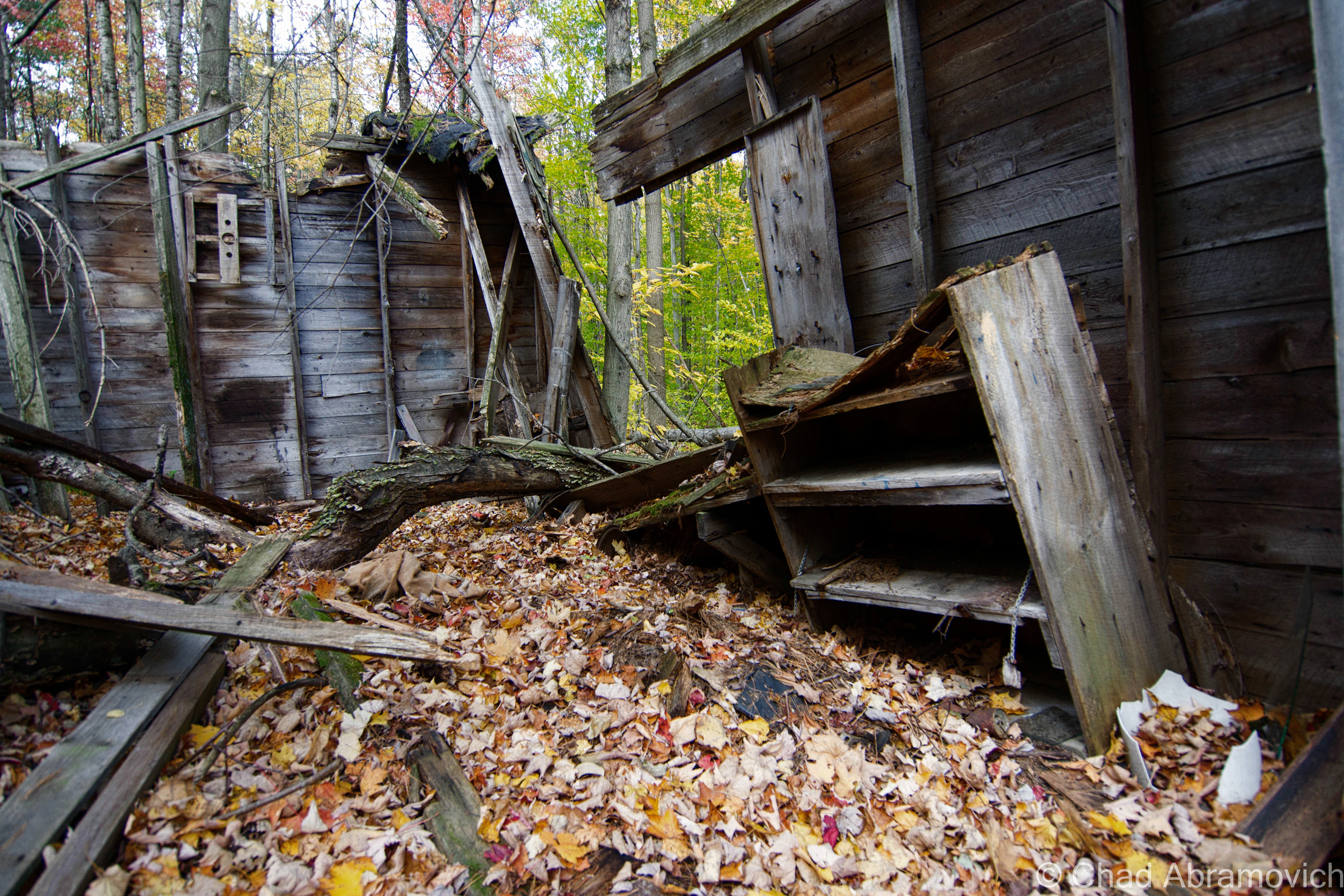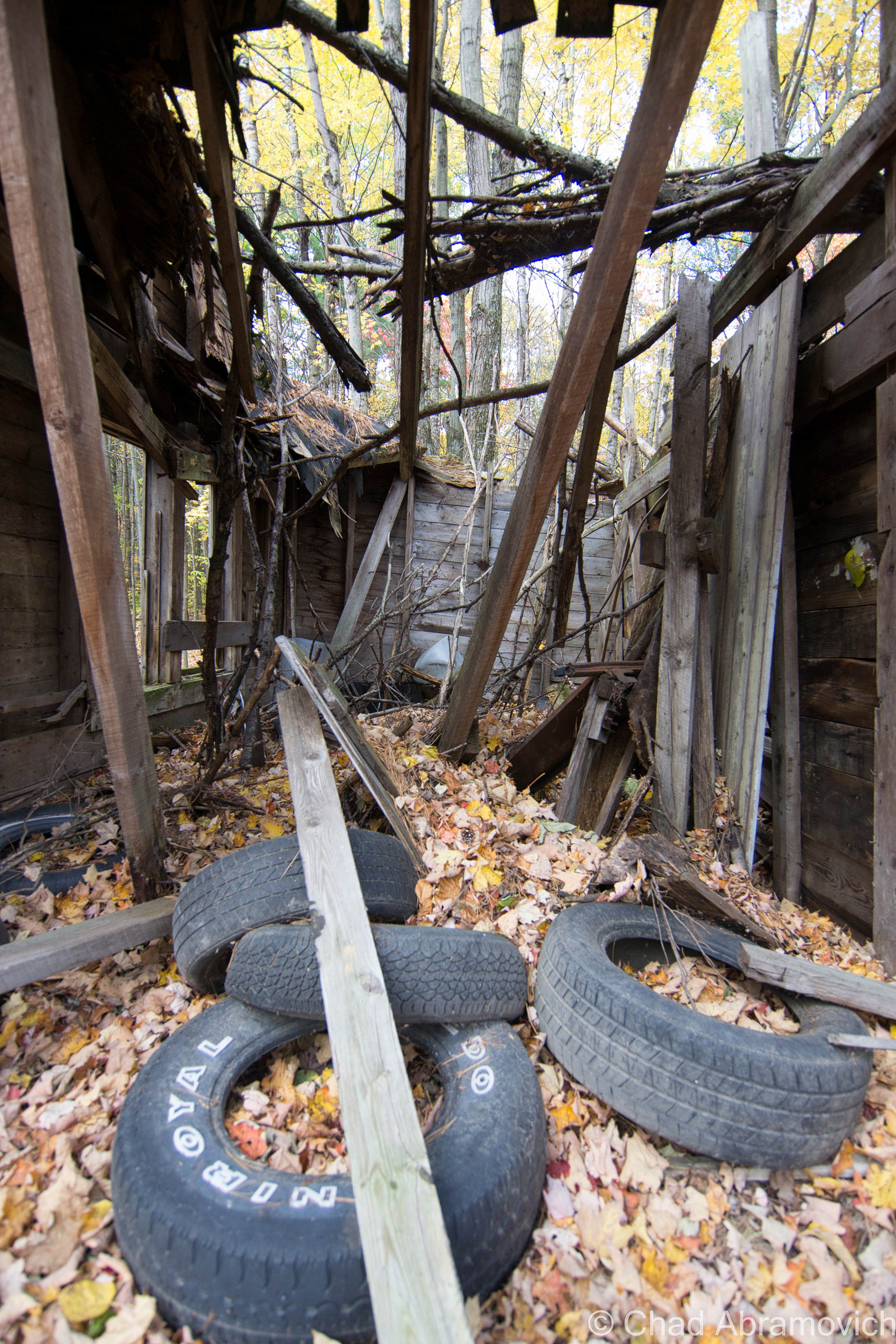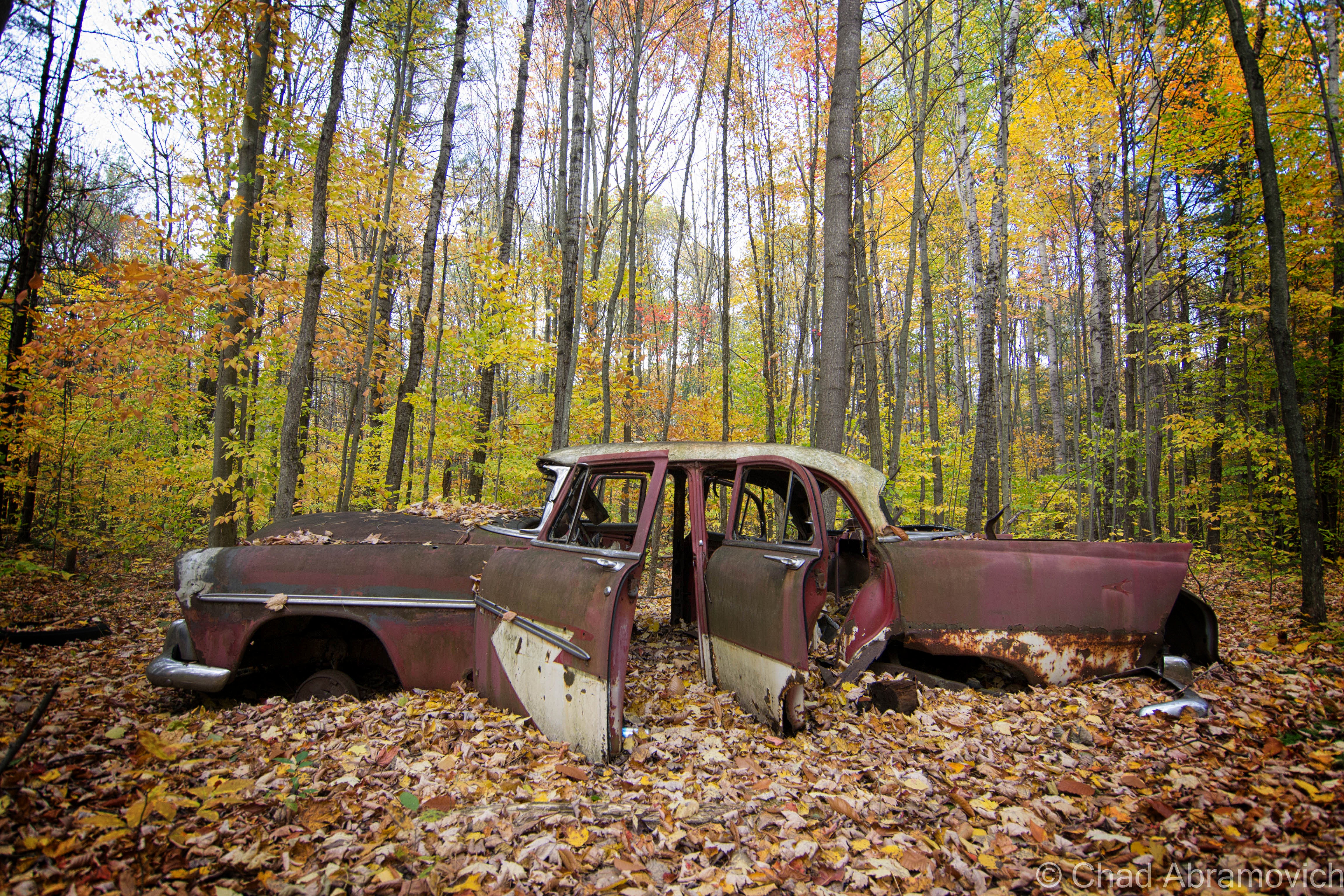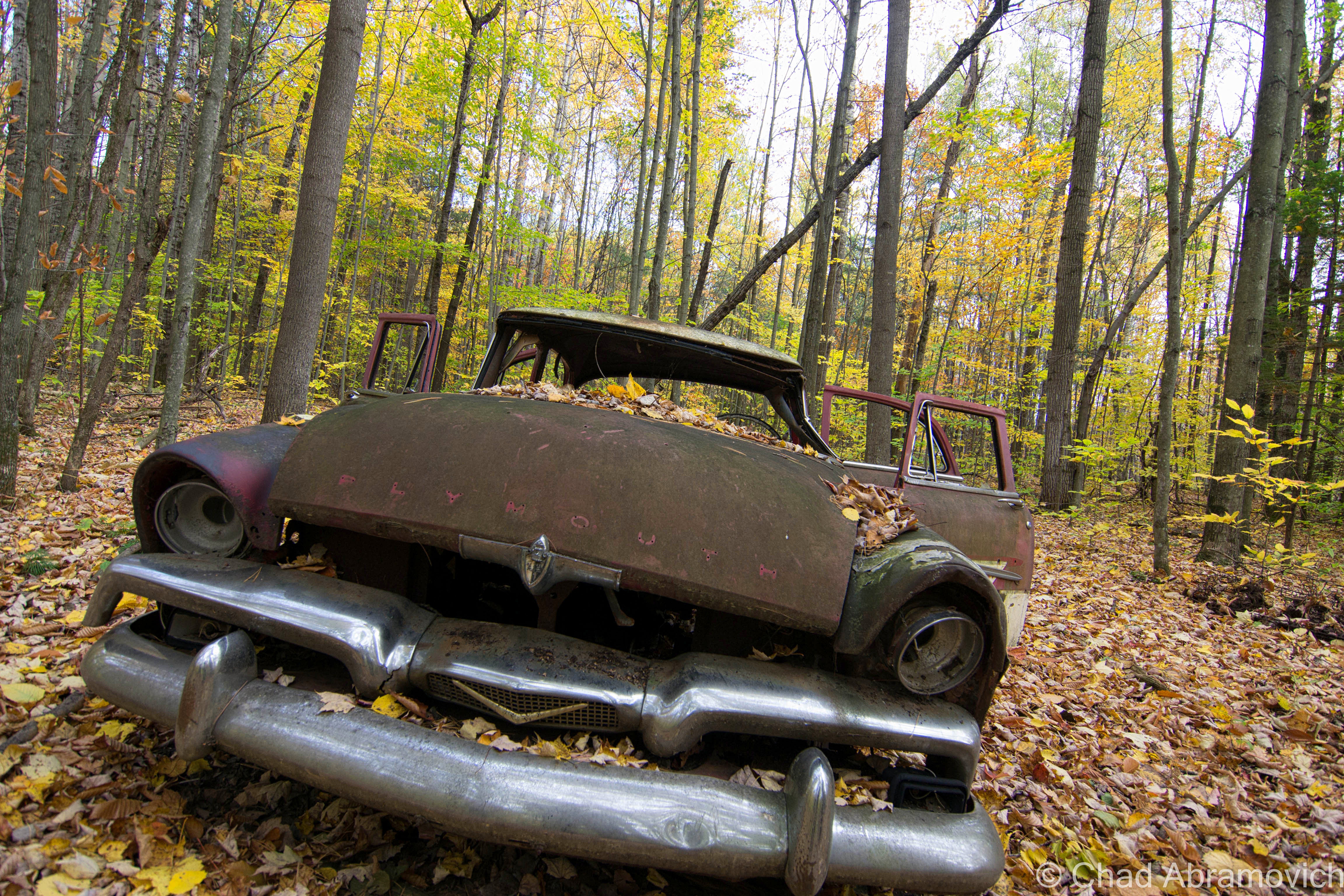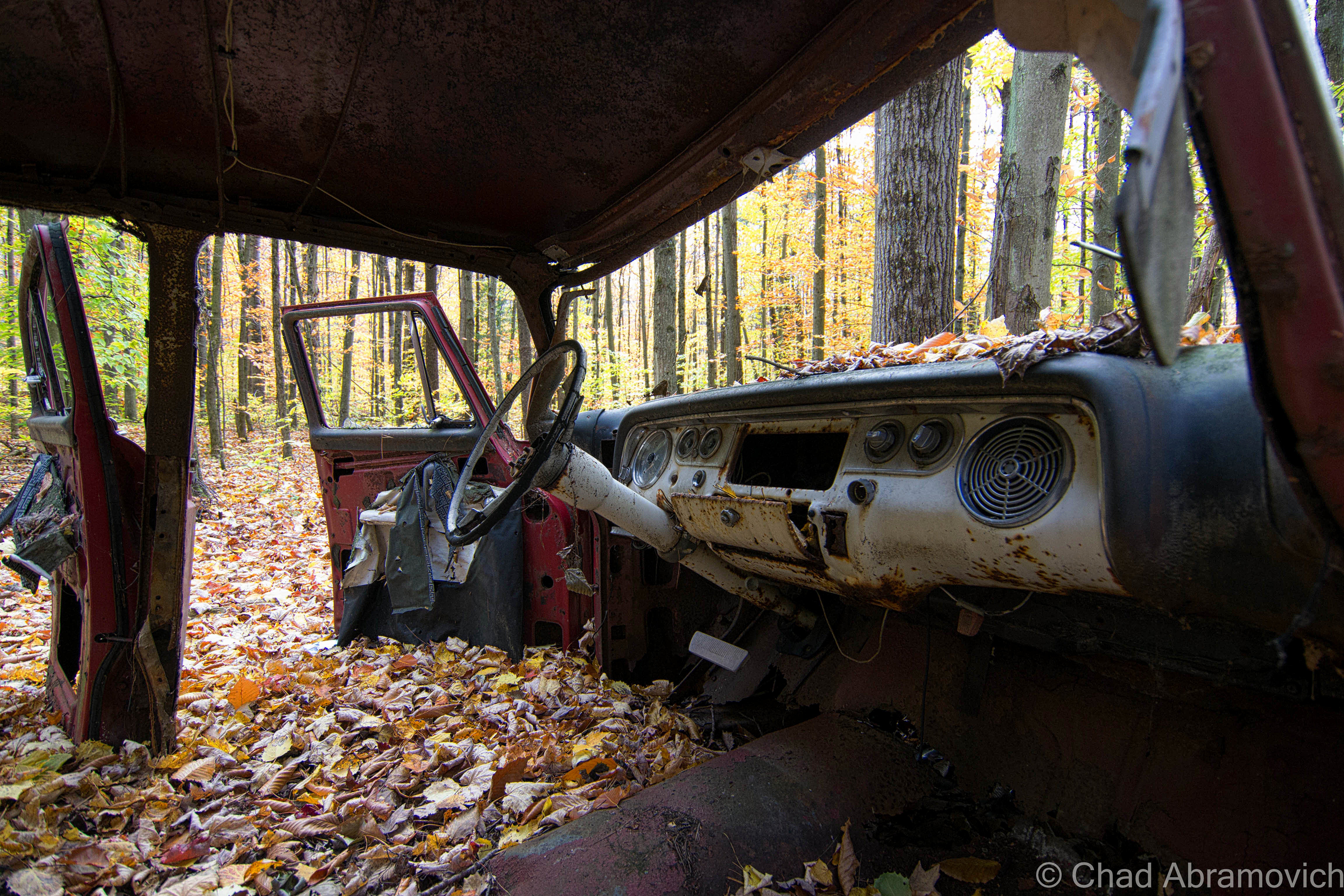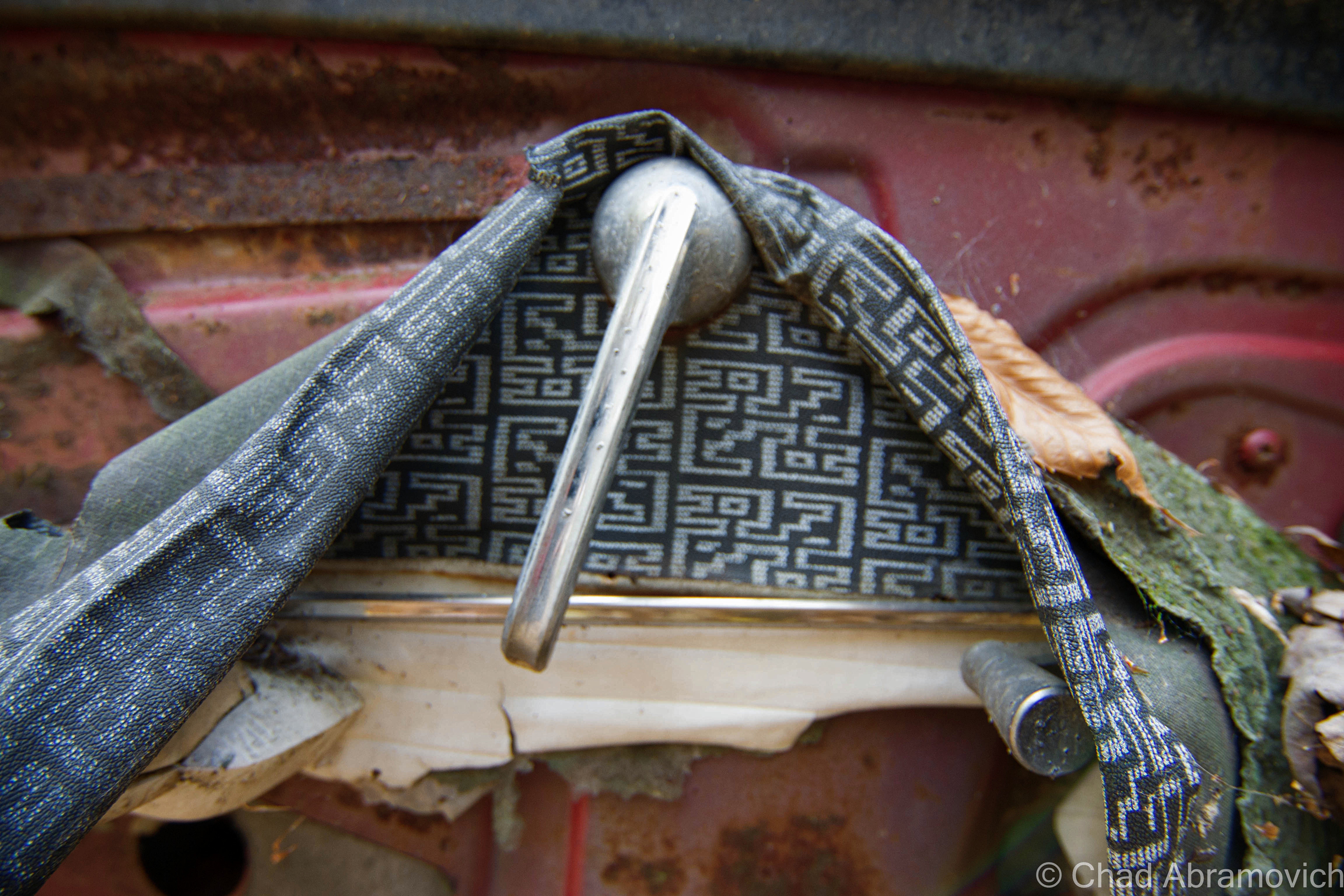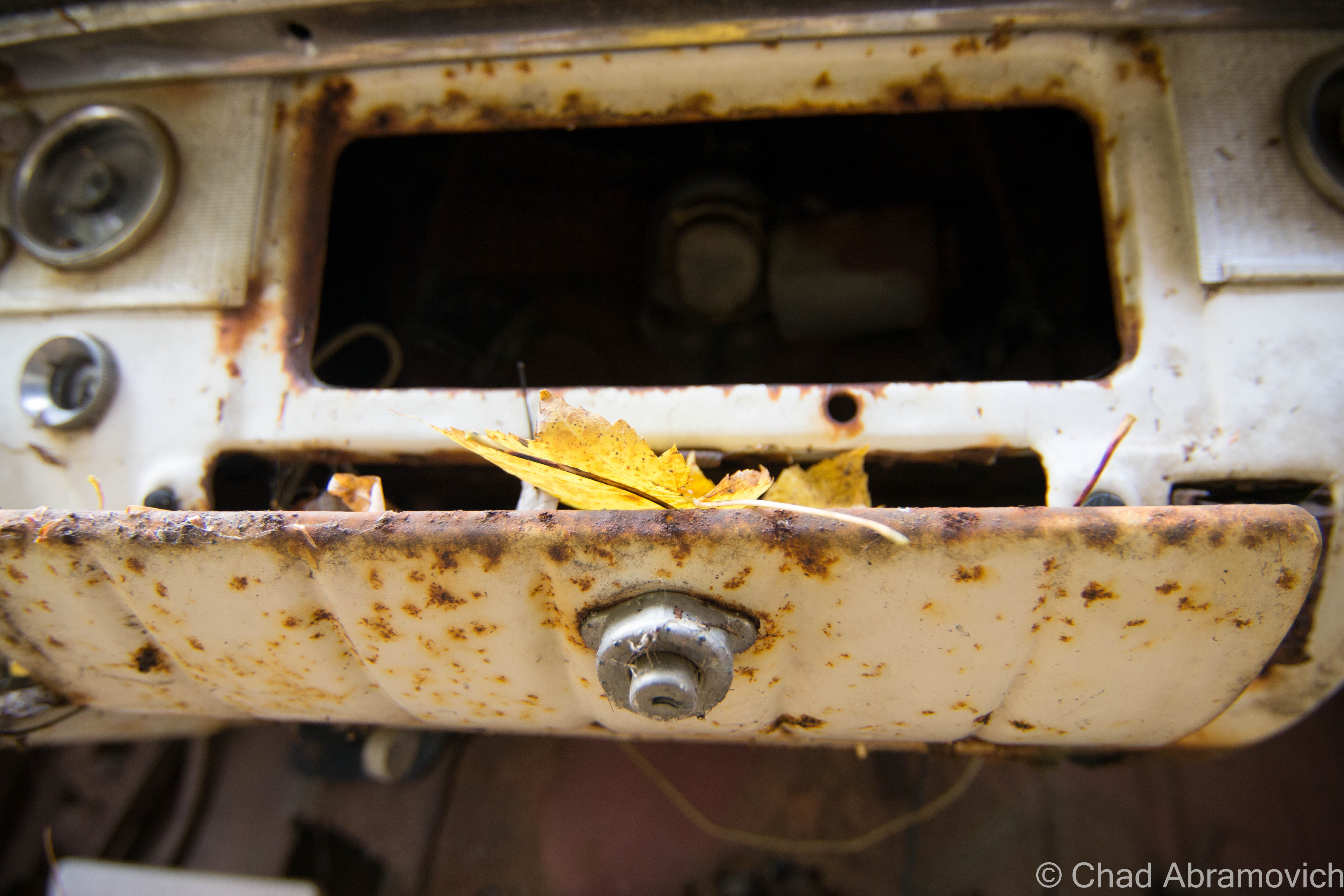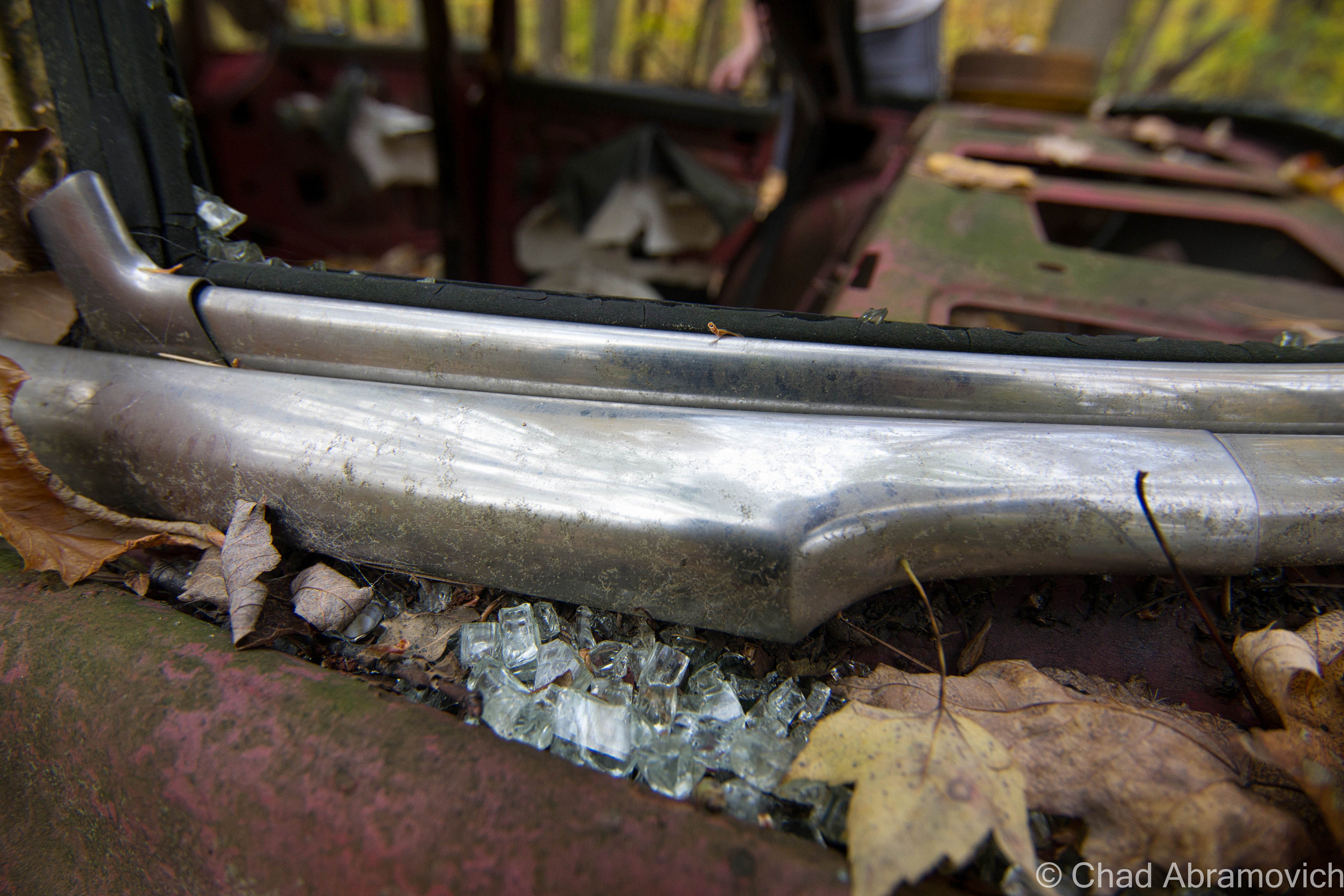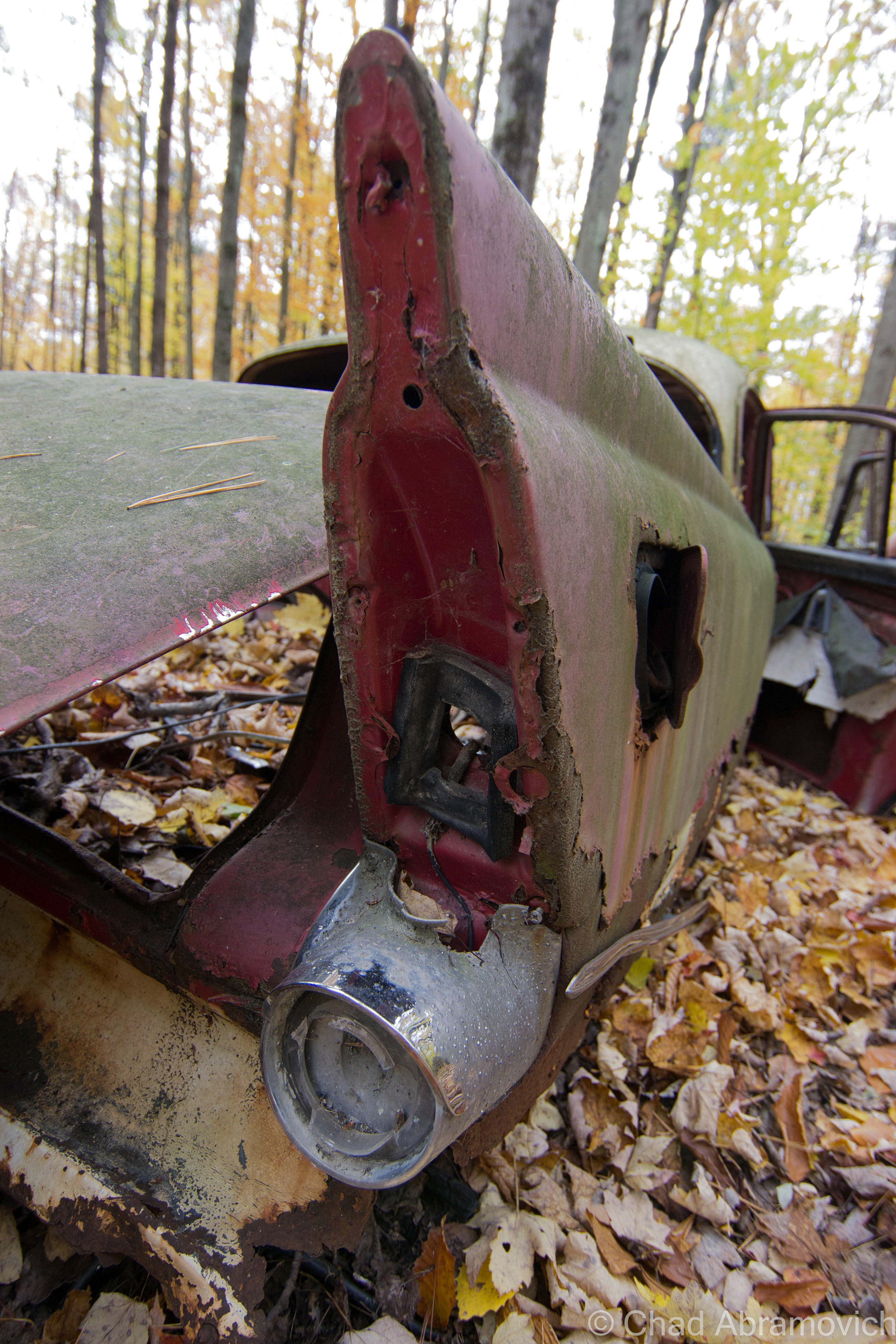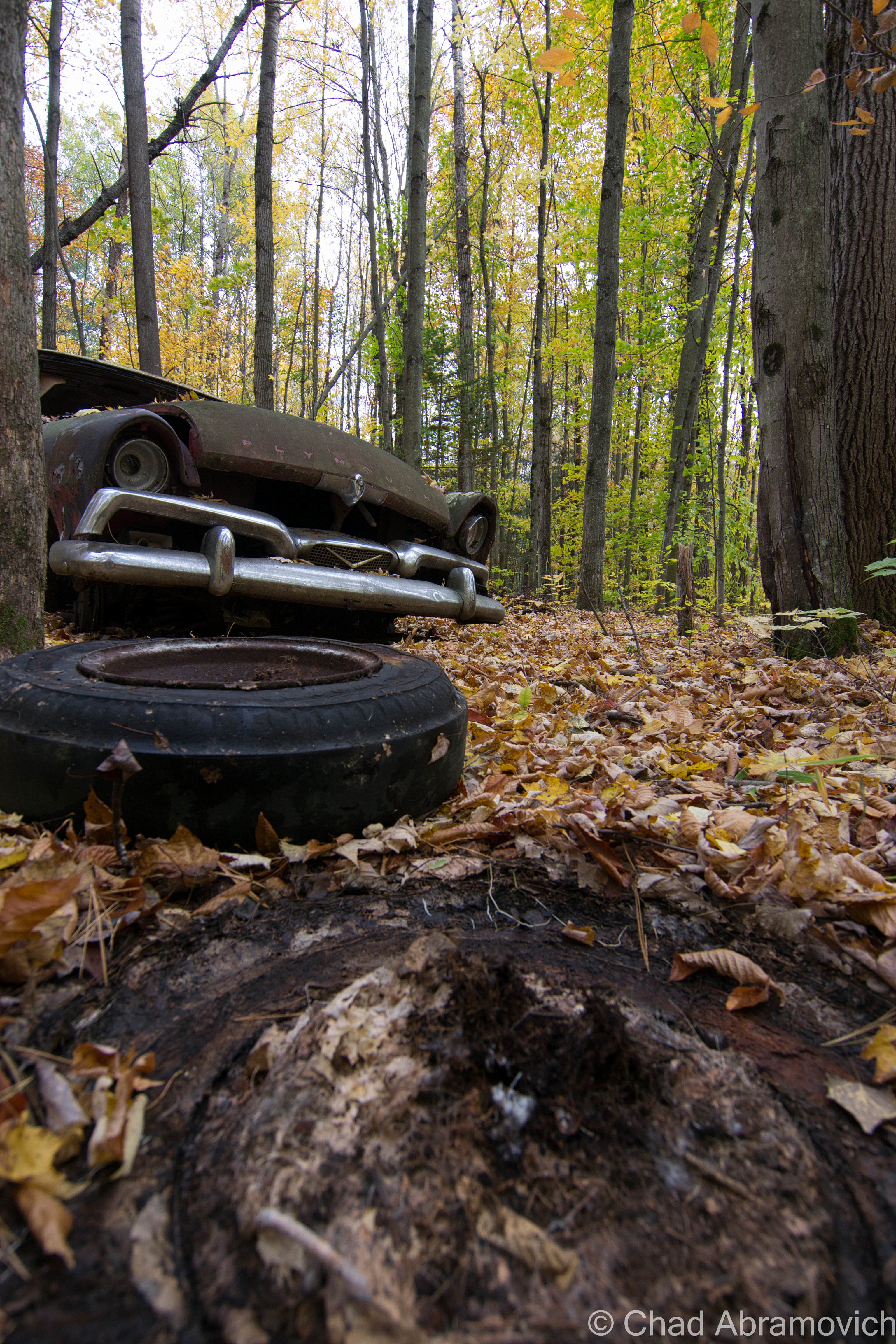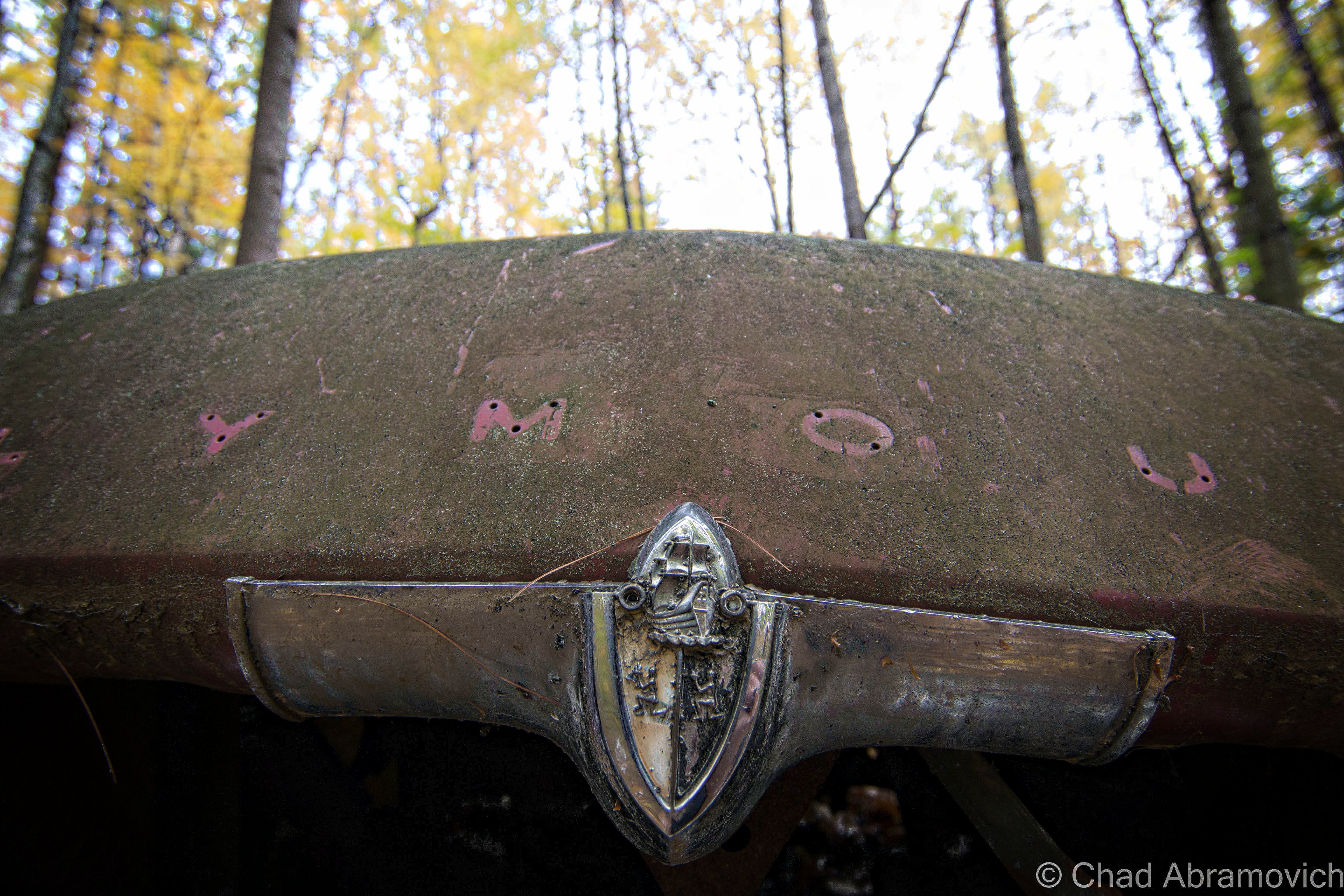Fall was a fading thing, gusty winds showered the car with dead leaves and rattled the burly body of my friend’s 96′ Volvo. Just having left our previous stop at Fort Montgomery, it was decided that we made the most of what was likely to be the last of the year’s great weather, and further our adventure.
We were en route to the small agricultural town of Sheldon, where he grew up, and we were on a search for the forgotten.
It’s fascinating and musing to think about how much Vermont’s small towns have changed in a century, hell – even in 20 years. Today, we were met by neglected paved back roads and sprawling corn fields that had only recently been cut, the small withering stumps of corn stocks sticking up like toothpicks in graying soil. Sticking out from the countryside are newer homes with 2 car garages and out of place condo complexes that look like they would be more fitting in Saint Albans or Burlington than in the middle of farm country.
What really brings me into a reverie though, is just how much of the past is tangible to us, and how close it is. Less than a foot beneath the soil we walk on to be exact. My friend takes up metal detecting in his spare time, a very cool hobby in my own humble opinion. Guided by his innate wisdom, we pulled onto Shawville Road, which lead us into the small village of Sheldon Springs.
A Boom Town
The name Sheldon Springs is of obvious origins, it was named after the springs found off the Missisquoi River, which were responsible for the growth of the community. In it’s interim, there were multiple springs hotels and a train depot, built to exploit the springs and their lure of tourism.
In the 1860s and 70s, a boom period sparked in Sheldon Springs as more eager tourists came to take “the waters”, and 11 hotels were all built around the Missisquoi, some of them featuring over 100 rooms and billed themselves as having luxurious accommodations equal to big city hotels.
Analyzed by a New York chemist, the springs contained chloride of sodium, carbonate of sodium, chloride of magnesia, carbonate of magnesia, chloride of lime, alumina, sulphate of lime, silica, carbonate of iron, carbonic sulphoric acid, carbonate of manganese and hydro-chloric acid.
Around 4 “tubing” operations were set up at the springs, and bottling plants soon followed, selling the Sheldon Springs waters. Professedly marketed boldly as a miracle remedy for cancer, scrofula, and other diseases of the blood, bottles could be shipped across the country, thanks to a train depot and proximity to the former Richford branch of the Central Vermont Railway (refurbished as the Missisquoi Valley Rail Trail). But like most boom periods, people eventually lost interest. Sheldon Springs tendered it’s resignation in the early 20th century because of the collapsed tourism industry, but the name still remains printed on the usual green aluminum signs off Route 105.
Today, Sheldon Springs is pleasantly quiet, a weird dissimilarity to bustling Route 105 nearby. On our walk around the village, only 2 cars passed us, kicking up leaves. With his collection of 19th century maps of Franklin Country from the Beers atlas, he is able to locate what once was, and what is mostly impossible to find today. One of the old springs hotels is now an unremarkable gravel parking lot next to a small church. It was called Congress Hall, and was one of the hotels to have it’s own bottling plant. From old photos I was able to find online, it seemed like quite the ceremonious place. But like many wooden buildings of that time period, the hotel burned down circa 1909 in an act of arson, set by a disgruntled employee. From all my Vermont research, it seems that fires hate hotels the most…
_2.jpg)

It’s strange to think about how such a large building is now completely untraceable. As we walked through town, he pointed it out to me. “You can see that the parking lot is almost raised above the natural geography here – like it was a foundation at one point. You can sort of see where it drops off in the back, like there were cellar walls there at one point”.
But what was more interesting to me, was what Congress Hall left behind. I guess the saying “one’s man’s trash is another man’s treasure” is pretty accurate in these circumstances. Back in 19th century Vermont, we didn’t have the so called Green culture inserted in our state’s virtues like we do today. Instead, if you needed to get rid of something, you just threw it out. Most commonly on your farm, or down into a ditch or a river, and left it there. Congress Hall also thought this convenient method was the most efficient way of getting rid of one’s problems, and dumped all their garbage down a steep bank near the Missisquoi River. Today, this garbage once thrown out, is now desirable and waiting for a respectable act of disinterment. Remnants of 19th century relics remain hidden beneath layers of soil, trees, erosion and dead leaves. The most significant feature here though, are Sheldon Springs mineral water bottles. There is literally a mound of hundreds – somewhere, in the woods and slopes of Sheldon Springs, and if what my friend tells me is accurate, an intact bottle can bring a good sum of money on eBay.
Walking a few feet down the road, we came to a Missisquoi Valley Rail Trail crossing. In an open field area directly paralleling the tracks, he pointed out that the former rail depot used to stand somewhere in the vacinity. Today, that’s completely unrecognizable, unless if you have an old Beers atlas of course. He’s metal detected around there, and told me he’s found quite a few old coins around the area, from former passengers dropping them from their pockets. Some he discovered were freshly minted at the time they were dropped, and sat there ever since as the years went on.
Across the road sat an unremarkable old ranch house lined with brawny old Maples that exploded in bright oranges and reds, beginning to shed their jackets upon the lawn. It used to be the home of his childhood friend, and he had metal detected on their lawn as well. About 4-7 inches below the surface he dug up more interesting artifacts. Coins, buttons, old tools, and other various things from a time long ago.
He recalled one time on a patch of farmland a few miles from there, he was digging and came across an old pipe, which he guessed probably ran to the river at one point, but now ran to nowhere. Through a rusted hole in the pipe he hit, was an old wrench which was quite large. He was able to determine that it was from circa 1930s. From what he speculates, the laborer that built the pipe literally dropped his wrench during construction, and it stayed there all these years until he unearthed it.
Haunted Rope Swings and Swimming Holes
Taking a short drive from the hotel ruins turned parking lot, we drove out of the village on an old steel truss bridge that crossed a temporarily placid pool held back by the dam, before the water tumbled over and down the falls. We pulled over and he pointed out areas he used to play as a kid. Climbing down the steep banks, there was an original brick pump house constructed almost directly into the rock face of the upper gorge, dated 1911. Kids in town used to make the seemingly dangerous climb on top of the building demonstrating their bravado, and maybe they still do. Though I now have a better knowledge of tempting or choosing my fate, I did stuff like that in my youth as well.
There were still some large foundations of the former hotels and mills nearby the gorge. He also pointed out that nearby, there used to be a “sketchy rope swing” that local kids would climb too and jump off of, plummeting down into the cold Missisquoi River below. A great Vermont summer tradition that is still popular today.
The rope swing was no longer there, vanishing after recent work to the truss bridge (which was much needed), but he could point out the branch it once was tied too. The rope was described as fraying and awkward, and the branch’s ability to support the weight of countless reckless youth was also questionable, but it held, and the kids used it. There was a weird detail though. Some kids around town thought there was something amiss about that old rope swing.
The rope swing has a spook story attached to it. Allegedly, kids had seen it swinging by itself, moved by unknown forces on still windless summer days, with no logical explanation to it’s movement. Maybe a tragic story from over 20 years ago could link to the peculiar attributes. As my friend informs me, two kids drowned there in the 80s, which may be that connection to it’s seemingly phantom movements. Regardless of empirical evidence or folklore that could clarify the phenomena, it’s certainly interesting, and possibly Vermont’s only haunted rope swing. Or, at least that’s been documented in a blog such as this one.
Boarding houses and School houses
Heading back into town, we passed Boarding House Road, which deadpans it’s namesake. He pointed out a restored 3 story building that used to once be a boarding house in town, giving lodging to laborers and workers that once worked at the Missisquoi Pulp Mill, another life blood of the community. The pulp mill was built in 1894 and still remains as an important employer of the village today.
The boarding house was abandoned when he was a kid, and he and his friends recalled exploring it, and getting creeped out by it’s unsound condition and ghostly appearance inside. Today, it has been restored as a private residence, and doesn’t look at all like a menacing or dangerous place. From the outside. Other vestiges of the mill remain around town, in the form of almost identical looking houses built along the main street that once housed the mill workers. As a matter of fact, he grew up in one of those houses, and they have since became Sheldon landmarks.
Nearby, past the mill, he pointed out another parking lot, this one more recent, storing rows of 18 wheelers. He recalled that used to be an abandoned schoolhouse when he grew up, and what a place it was. It was 3 stories and in a bad state of dilapidation. There used to be a sizable auditorium out back, and him and his friends would go inside and hang out on the rotting stage and rows of decaying seats, before going off to explore the dark hallways and dusty classrooms. He told me that there were definitely creepy feelings inside, especially in certain parts of the school. At times, they didn’t like going into certain areas and avoided them. The schoolhouse was sadly torn down by now, which was a disappointment to me after I had excited asked him if he could show me where it was. But even staring at the parking lot, the story remained robust.
A Walk In The Woods
But the next place we ventured too was enigmatic, it had no history we knew of, or a real road that lead us to it. It was in the middle of the woods, far from anything. It had the appearance of a southern shotgun house, but the inside proved to be a little more spacious than I had thought. It was a simplistic country house, done in traditional horsehair plaster and subtle wainscoting accents, sort of everything you’d expect to find in an abandoned Vermont farmhouse. Parts of the ceiling and floors had started to cave in at various rates and were covered in layers of plaster dust and disintegrating miscellaneous. All of the furniture had long been removed, leaving no relics behind apart from a few rusted cans in a pantry and the more modern Natural Ice cans. The house once had a front porch, but that has long wasted away from the front. The side of the house was also interesting, because it looked like two identical houses had been pushed together to make one house, judging by mismatching siding. But on the other side of the house, it was all uniform greenish siding. Back then, Vermonters had ingenuity, and if a job needed to be done, they did it in any available method to them. This might have just been a way to finish siding the house.
There was an abandoned garage nearby, which felt sort of strange to see in the middle of the woods with no driveway or path leading up to it’s double doors. I suppose my mind has been strongly trained to make assumptions. Inside, there was a collecting of disused tires buried in leaf fall.
Around the house, and underneath my boots, were a collection of a familiar Sheldon relic, bottles. Plenty of old glass bottles were laying around the house, many of them weathered beyond legibility. Just to the right of me was a steep bank that tumbled down into a stream below. Wooden retaining structures had been built in certain places down the streamfall. My friend informed me that those were an old way of guiding and controlling water current. He also told me that somewhere down that steep bank was a pile of bottles that was almost baffling in size, knee deep and stretched several feet across the slippery banks. But the freshly fallen leaves completely obscured it from view, and he didn’t quite recall where it was. I decided not to climb down the bank and look for it, the ground was slick, and figured that there was more of a chance of getting hurt than finding treasure.
Before we left, he had one last thing to show me. Following a barely visible set of tire tracks, which I thought was so bizarre to find in the middle of the woods, we came to the shell of an old 58′ Plymouth. The tracks started at the house, traveled about 100 yards, and ended directly at the car, in the middle of a sizable forest far away from any back road or farm. Due to my love of old cars, abandoned and functioning, I was very pleased to photograph it. It had been sitting there for quite some time though. The frame was in the late stages of decay and corrosion, and the inside was completely gutted, no relics were left behind.
This trip was one of my most memorable. Though it wasn’t a tremendous abandonment, my experience just walking around the quiet and increasingly mysterious town of Sheldon on a very enjoyable Fall afternoon really sparked layers of curiosity in my mind that will now be forever associated with the community. And I want to uncover more.
There was so much information that I left out of this blog post. As it is, I already wrote far more than I expected to. I’m in the process of planning another trip up to Franklin County, and actually trying my hand at metal detecting. If all goes well, I hope to write about it, and finish this great story.
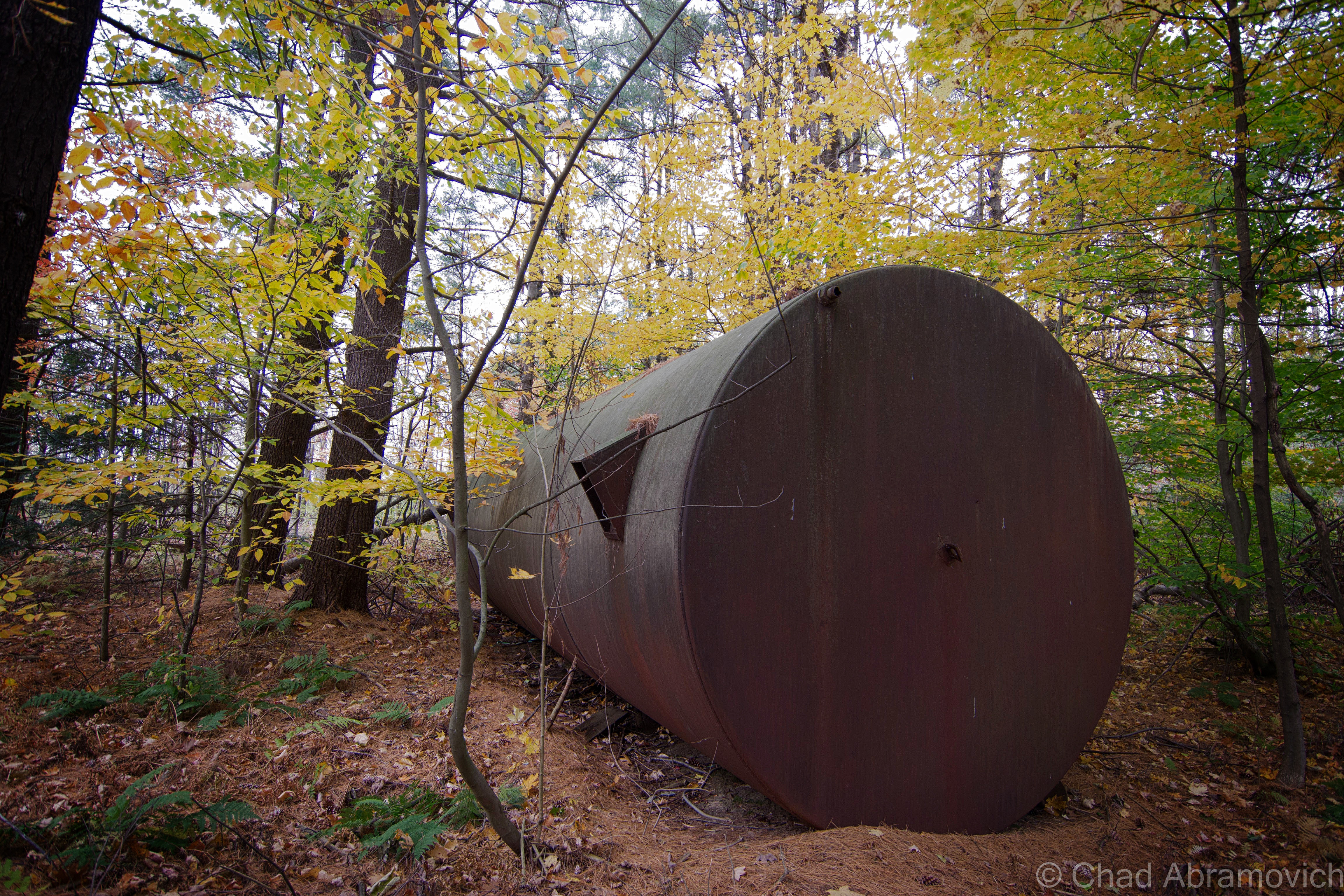
—————————————————————————————————————————————–
To all of my amazing fans and supporters, I am truly grateful and humbled by all of the support and donations through out the years that have kept Obscure Vermont up and running.
As you all know I spend countless hours researching, writing, and traveling to produce and sustain this blog. Obscure Vermont is funded entirely on generous donations that you the wonderful viewers and supporters have made. Expenses range from internet fees to host the blog, to investing in research materials, to traveling expenses. Also, donations help keep me current with my photography gear, computer, and computer software so that I can deliver the best quality possible.
If you value, appreciate, and enjoy reading about my adventures please consider making a donation to my new Gofundme account or Paypal. Any donation would not only be greatly appreciated and help keep this blog going, it would also keep me doing what I love. Thank you!
Gofundme: https://www.gofundme.com/b5jp97d4


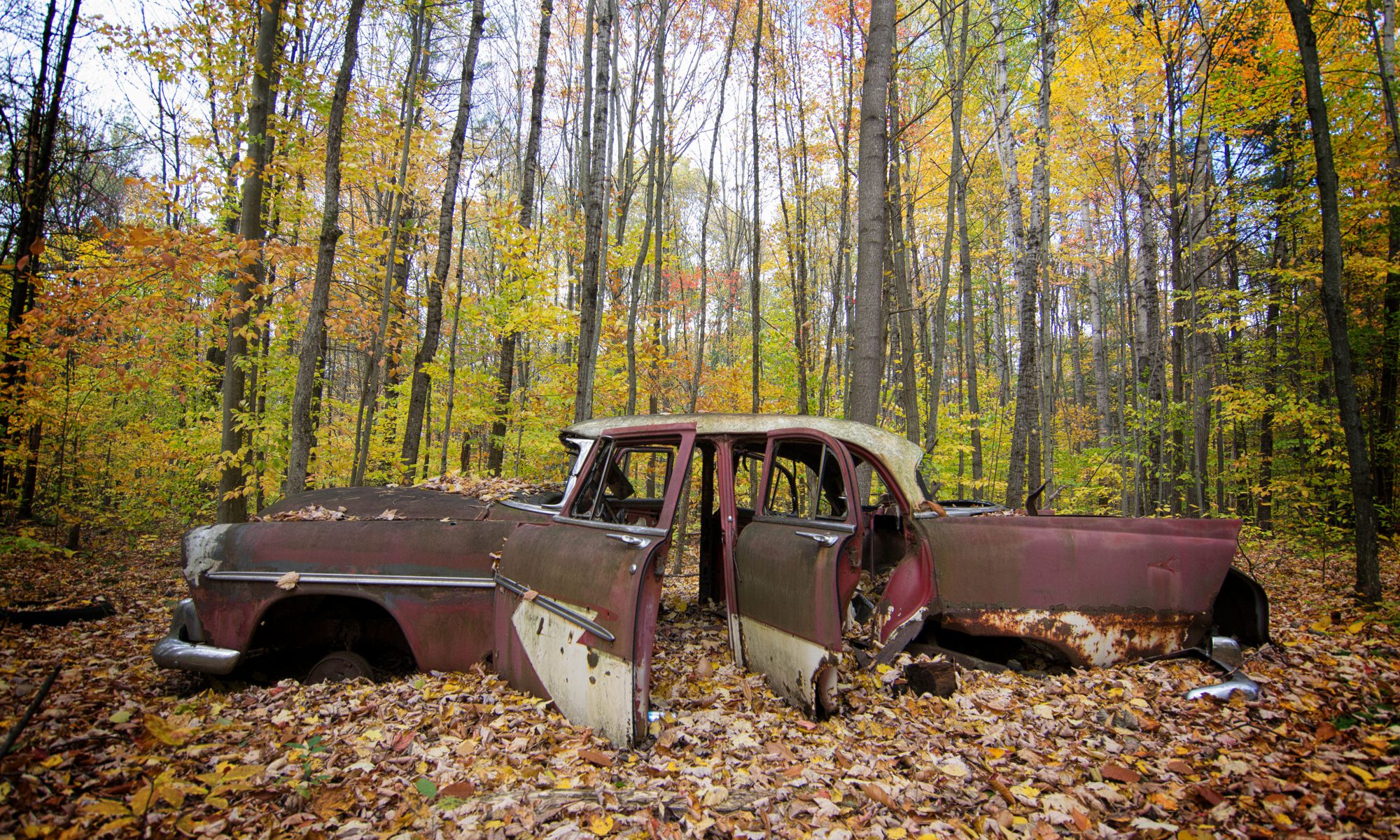
,_Sheldon,_Vt,_from_Robert_N._Dennis_collection_of_stereoscopic_views.jpg)
